GET IBIZA VILLAS IN YOUR INBOX? SUBSCRIBE
GET THE LATEST IBIZA NEWS IN YOUR INBOX SUBSCRIBE

Every year I write a Christmas blog and today, I couldn’t help but wonder if this must be how the Queen of England feels when she comes around to writing her annual Christmas speech (Yes. Yes I did just compare myself to dear Liz). Because despite all the different things that have happened in my world over the past 12 months, I just want to say the same thing over and over and over again. I just love Christmas in Ibiza! As I type, I am actually on a plane flying home for Christmas* (apologies if, like me, you get a pesky song stuck in your head for the rest of the day), aboard a plane chock-full of families full of Christmas cheer heading off to see their loved ones.
When I say home, I mean home to Ibiza of course, and although my passport (and my accent) may indicate that I’m from another town in another country, my heart most definitely beats for Ibiza, my beautiful little Mediterranean island off the south coast of Spain. People often ask me why I choose to spend Christmas in Ibiza each year, when I have family, friends and loved ones celebrating in other places I once called home. The answer is simple. Christmas in Ibiza is AMAZING. Once you’ve experienced an Ibiza Christmas, it’s very difficult to go back to a ‘normal’ Christmas afterwards, whether your definition of normal is snow and roast turkeys, booze and TV marathons, BBQs and beaches or any other tradition you may hold dear.
But exactly what IS an Christmas and WHY is it so amazing? What is it that makes it so much more special than anywhere else? Where to start… Christmas in Ibiza is whatever you want it to be (except for snowing – it definitely doesn’t snow). If you want to get together with your nearest and dearest, cook a big traditional meal and spend the day singing Christmas carols, all the elements are here and waiting. If you want to go to Pacha until 7am on Christmas Eve and sleep through the usual Christmas lunch and decide to just go out for a decadent dinner in a restaurant where you won’t have to wash any dishes, you’re in the right place. If you want to be by the sea, you want to be in the country, you want to be in your own home or you want to be in a luxe hotel, you’ll find your Christmas paradise here in Ibiza.
Christmas in Ibiza is also with whomever you want it to be with, and this is one of my favourite things, because in Ibiza, your friends really do turn into your family. Many big Ibiza Christmas dinners are made up of ‘orphans’ – that is, the people who have moved here from far and wide, and have no family here to spend the holidays with – and these can be the ones where you make the firmest friends that will stay with you for the rest of your life. Each person brings or makes something traditional to their country and you end up with an amazing feast of epic international proportions. And of course, Christmas in Ibiza is hot and sunny.
This may feel a little out of the ordinary to those of you from the northern hemisphere, but there is something magical about drinking a glass of champagne in the sunshine on your roof terrace to start the day, or popping to the beach for a stroll with your friends who have dogs, before heading off to your respective Christmas celebrations. By the time the sun goes down, a chill settles over the air and you’re ready to throw on your Christmas jumper and tuck into a hot dinner. I have spent many a Christmas in Ibiza, each one of them different and I wouldn’t swap them for anything in the world. I’ve celebrated Christmas in a house with total strangers; I’ve suffered a Christmas so hungover I thought I would die (but got straight back on the party wagon), I’ve survived Christmas in a big family-like atmosphere with friends who have kids; I’ve hilariously done Christmas slaving over a hot stove (and burning the turkey!) for my best friends; I’ve enjoyed Christmas in a fancy restaurant; I’ve had an amazing Christmas on the beach; I’ve had a lazy Christmas at home with just my boyfriend and cats. In the end, I don’t mind what I do for Christmas each year, as long as it’s in Ibiza. I hope that each and every one of you gets the chance to spend at least one Christmas in Ibiza so you can truly understand the feeling. There is nothing I love more than Christmas in Ibiza – and I hope Yule love it too! (sorry!) *Yes! I left the island – regular readers of my blog will know I find it very difficult to separate from my island home, but it was just a quick trip to the mainland…
Home is where the heart isHer love affair with the white isle blossomed when she was 11 and became fast friends with a local girl – from a Dutch family but Ibiza born and bred – whom she met while on holiday with her parents, and over the subsequent years, the two girls continued to visit one another and Ibiza became a very important part of Mabel’s life over the next 35 years. When Mabel and her husband were looking to invest in a holiday home, the idea of Bali came up after they had lived in Asia for nine years and loved its weather, energy and people, however seemed too far away when travelling with four kids, and despite being much closer, the south of France seemed just a bit too stuck up. So Mabel introduced her husband to her island, and he too fell in love, finding many similarities with Bali, so the decision was easy. “We love the energy and free spirit of Ibiza and the friendly inhabitants,” says Mabel of her adopted home. “There are so many beautiful facets of nature here. And not a lot of people know about this. There are some places that are really popular in the summer, but a lot of the island is still our secret.
The purchase however, was not quite such smooth sailing. The couple viewed a vacant plot of land in the hills of San Miguel, and were very keen to acquire it to build on, however striking a deal with the owner took almost two years. It also transpired that once you had bought the plot, you were limited to building within the plans that had already been approved for the land. “The previous owner’s vision was more like Miami Vice,” laughs Mabel. “He had plans for a Jacuzzi in the living room and a swim-up pool that led into the house. I think it was all designed with villa parties in mind, which was not our style at all.” Thankfully, through some local connections, Mabel was introduced to the renowned architects of Blakstad Design Consultants, who were able to convert the plans into a more traditional, Ibicencan style family home. “Blakstad were so great – such hard workers and such nice people,” says Mabel of her dream team. “It’s so easy to fall in love with Ibiza, but to buy and build here is totally another story – you need a lot of patience. And it’s a constant work in progress, we are always adding or changing something each year.” …

































Fast forward four years and the newly completed six-bedroom Can Terra became the family’s much-loved escape from the city. Nestled into a hillside, surrounded by pine forests and olive groves and with an uninterrupted view to the church (“Where I hope one of my children gets married one day”), saltwater pool and beautiful gardens, the property is ideal for outdoor living, and very much suits the family’s love of outdoor pursuits. Much of the décor was purchased or designed and made locally. “We wanted to keep it as authentic as possible,” says Mabel. “It was so much easier than shipping it in from somewhere and we like to help local people as much as possible.” Star features include a row of spectacular floor to ceiling glass windows that separate the kids rooms from the master suite, yet open up to create a feeling of outdoor living, and a huge skylight that retracts, for fresh air and energy to flow freely through the house. A comfy cinema room provides after dark entertainment for the kids and the areas for relaxation are plentiful. The family have also planted 150 olive trees and now harvest their own oil each year in conjunction with the local corporation.
The family try to visit around six times a year. “But it’s never enough,” says Mabel. “We will move here eventually.” The style of Mabel’s home away from home is quite different to the family’s current abode in Belgium, very intentionally. “I want things to be easy when I’m here,” she says. “I want to relax and enjoy it!” The chic and simple minimalist styling also makes it easy for the family to convert the villa to a holiday rental when they go back to the city. “It’s the kind of house that could be a B&B,” says Mabel of the spacious layout. “It already feels like that way sometimes with all the teenagers eating and sleeping here in summer.” “When we’re here on holiday, the house is full of life, full of children, full of fun. We are a big and very close family,” says Mabel of her tight-knit clan, who love to hike, watersport, cliff dive, go out for dinner, find nice local restaurants and explore the many hidden beaches of the island. “We love to be surrounded by our family and friends and we fill the house with them – otherwise it can seem empty as it’s so big. It gets very well lived in when we are here. It makes us so relaxed and happy to be here.”

































In those days before 1960, a walk in the country was a Marco Polo journey through many lands. There was such variety, such difference from one farm to the next. Each had its own special flavour. There was something deeply satisfying in the atmosphere that set Ibiza apart from other places I had visited. Feudalism had never existed on the island. There was no nobility, no landless peasants living in towns and working on another’s fields, as was the case on the neighbouring island of Mallorca.
Society was completely decentralised. There was virtually no government, at least it was not felt on a personal level. Because the family was effectively the largest social unit, a spirit of independence and self-reliance prevailed. Each farm was a tiny kingdom that grew every kind of fruit tree and field crop, provided meat and wine, clothes and shoes; all the needs of the family were fulfilled on the farm itself. A Spanish military psychologist once told me that the Spanish Army considered the Ibizans to be substandard material, that they could not be taught to march in step. I was proud of them.
The Ibizans had a social structure that allowed each family to pursue its own life according to its own inner genius. An Ibizan may have been oppressed by the circumstances of life, but not oppressed by enforced behaviours imposed by an overseer. Enslavement is a subtle thing. Most cultures practice it to a much greater extent than people realise. In Ibiza enslavement was not programmed into the cultural system. There is a very great difference between working under arbitrary rules and working according to the dictates of wind and weather – between orders based on human conceits and orders based on natural needs.
The one kind of work constricts the soul; the other liberates it. One brings discontent, frustration; the other, ease of movement and contentment. Oneness to the moods of nature engenders wisdom in a person and versatility. These are qualities I found in the peasant farmers of the island. If you live as a king, of no matter how tiny a realm, you are still a king, responsible to the microcosm that is a sample of all life. These farms, gardens, little kingdoms, breathed a sense of wellbeing seldom met with today. So much human care, contact with trees and animals creates something precious in the atmosphere. In the last analysis, what set Ibiza apart, for me, was its baraka, the feeling of blessedness.
Food, glorious food. One of winter’s greatest pleasures. Not that food isn’t a pleasure in summer of course, but there’s just something so amazing about indulging in big, hot, steaming bowls of deliciousness, sizzling morsels of marvelousness and creamy, comforting postres in the cooler months. First of all, as with most things in winter in Ibiza, we’ve got much more time to enjoy our mealtimes now. There are less snacks on the go and drinks in plastic cups in the car, and more long and lazy lunches, decadent dinners and even sunny brunches once the season is over. The idea of skipping a meal in winter is preposterous – with so many good restaurants open and such great fresh produce to choose from if you’re cooking, there’s more than enough to go around. Which brings me to one of my favourite Spanish winter rituals: the menu del dia.
Translating literally to the menu of the day, many restaurants – be they humble cafes or five-star dining destinations – present a set, (usually) three-course menu each day, showcasing some of their chef’s finest dishes, or perhaps whatever was in abundance at the market that morning. The menu del dia is generally (bit not always) limited to lunchtime, and also mostly served from Monday to Friday (but again, the odd friendly restaurant may offer it all weekend). Every venue’s menu is different – some offer the choice between two or three courses (for those who don’t have ravenous appetites) and you can opt for starter and main, or main and dessert, depending on your taste bud’s preferences. Some restaurants include a glass of wine, a beer, water or soft drink. Others throw in a coffee with your dessert. Most have a minimum of two options in each course to choose from, and vegetarians can always ask for an option if it’s not on the menu.
You can find a menu del dia in Ibiza for as little as around 6€ for three courses and a drink in a sidewalk cafe, and you’ll also find some of the more flashy restaurants charging around 30€. A pretty standard price for a menu del dia in a good quality restaurant, is between 15€ and 18€. Whether you’re on a budget or feel like something fancy, when you put it all in perspective and think about what a regular menu costs just for one course, you’ll start to fall in love with the concept of a menu del dia, like I did many moons ago. So much good food, so many options! For the menu del dia virgins out there, I’d like to share a little of my menu del dia wisdom, gleaned over many winters spent in search of the holy grail menu.
First of all, you’re going to need to allocate a little extra time for your lunch break than you would usually, if you want to really savour the entire experience. The Spanish typically dine at about 1pm, then head home to make the most of the rest of ‘siesta’ time with a nap, before getting back to business at around 5pm. Whether you’re working all year round or enjoying some down time, I suggest following their lead. Once you’ve wolfed down a creamy soup, some crispy lamb chops and tucked into a slice of flan, it’s no surprise you’re going to feel sleepy. Lunch is considered the biggest meal of the day here, so plan a light dinner for the evening (you see why tapas is so popular a dinner choice in Spain?). My second piece of advice: If you’re going to start enjoying menu del dias on a regular basis and taking siestas like a good Spaniard, then be sure to allocate a little extra time in your schedule for some exercise. Or just be prepared to loosen your belt a few notches, or start wearing your comfy pants more often!
Menu del dias are usually hearty portions, and they’re also not always always the healthiest of options (excluding a few notable locations) – though they are always damn delicious! I’ve never met a menu del dia I didn’t like. Last of all. Don’t overdo it. If you’re anything like me, you might want to steam in there and order the creamy ham and cheese croquetas for a starter, the crispy beef Milanese with chips for a main and then think you’ll have room for a sweet dessert afterwards, but halfway through your main meal, you’ll get the dreaded feeling of being FULL already! It’s best to balance your courses, and choose one light and one heavier, for example start with a soup or salad then opt for a meaty dish or pasta, or alternatively, enjoy your deep fried starter but select a light fish dish for your main. That way you’ll always still have room for dessert.
Here’s the thing: no two menus are alike. You could eat a menu del dia every day of the week throughout winter in Ibiza, and never get bored. You’ve got an entire island to explore – one day it’s a menu on the beach, the next in the countryside, followed by lunch in a quaint and charming village or in the old town. Whether you’re outside on a sunny terrace or cosied up by a fireplace, every menu has its merits. Everyone has an opinion on their favourite menu del dia place and why it’s the best of the bunch, but rather than spill the beans on my secret favourite places, I encourage you to be like the Goldilocks of menu del dias, and keep trying them all ‘til you find the one that’s j-u-u-s-t right (and then go back the next day just to make sure)!
Winter rituals – Treasure huntingIt’s not about where the party, or the after party is at anymore or where the cool kids are at. Our new rituals follow a much more personalised agenda – be it sunny brunches with friends, committing to a regular yoga practice, walking dogs from the shelter, hikes in the countryside, long luxe lunches or extended bouts of Netflixing – whatever your ritualistic pleasure, it can be dipped in and out of, shared with others or enjoyed alone. One of my own favourite winter rituals is the weekly treasure hunt that takes place at the markets. You never really know exactly what kind of bounty your rifling, scouring and rummaging is going to dig up, but you know that every weekend there is some special piece of treasure with your name on it. It’s out there. You don’t know exactly where it is, you don’t know exactly when you’ll uncover it… but you’ve got to make the ritual pilgrimage to each of the Ibiza markets to make sure it doesn’t end up in the hands of someone else.
Over the years, I have unearthed some serious gems (genuine knee-high leather riding boots in perfect condition for 5€, an antique chest of drawers for 20€, a classic Monopoly set, loads of books, beautiful plants, a vintage fur coat, the list goes on) and also some things that make me question my better judgement once I got them home (a circa 1970s child’s painting of a deer, a Pocahontas style green suede tunic with tassels, a life-size goose-shaped plastic garden lamp). To me, it’s not about whether you win or lose at market shopping – it’s all about how you play the game. And to play, you’ve really got to get involved.
In 2015, the Ibiza market scene has gone to the next level. The island is literally a treasure trove of markets, from north to south. It’s almost impossible to cover the entire circuit comfortably in one weekend – though trust me, it IS do-able. My first piece of advice – wear layers. And shades. Markets are like a sun-trapping micro-climate. No matter what your iPhone weather app tells you, you will be sweating by the first lap! The weather is so spectacular at this time of year that you can still wear flip-flops, shorts and a t-shirt while strolling around in the sunshine, and you are even likely to get sunburnt – I have made the mistake many times of donning ugg boots, a big cardi and a scarf – but you’ll need to be prepared as the temps drop rapidly from 4pm, and depending on where your journeys take you, you might just need the coverage later.

You’ll need to be fuelled up for the experience, so my advice is to start your day at the Mercado Nuevo early in Ibiza town. This is a fresh food market, so it’s also the perfect opportunity to grab your fruit and veggies for the week ahead but all the real action here takes place at Victor’s bar on the terrace, surrounded by off-duty cops, lawyers and bankers. You get the feeling this is where Ibiza’s real wheelings and dealings take place. Here you can start with a coffee and tuck into a slice of tortilla for essential carb-loading, but you’ll probably be coerced into having a Hierbas shot before paying the bill. Personally, I think it helps hone the senses for the adventures ahead.
First official stop: Mercadillo de Sant Jordi. The Saturday morning flea market that is as much about socialising as it is finding a bargain. You’ll see the post-party crew sporting big black shades, yummy mummies distracting their kids in the prams with whatever sparkly trinket is closest to hand and plenty of club workers flogging off their promo tees and CDs in a last ditch effort to make some extra cash for the winter. My advice is don’t pay more than 20€ for anything here – it is a car boot sale on a dusty old horse racing track after all. You’re unlikely to find any vintage designer labels hiding amongst the rails of Space tees and while there is an array of electrical goods sitting around, I think it’s worth spending the extra fiver and getting something new on Amazon rather than someone’s Nan’s old kettle. That being said, it’s a great place to find quirky décor, to pick up cactii and palms, oversized cushions and sparkly trinkets.
A good rule of thumb to go by at Sant Jordi, is that it’s time to head off when the guys on the stairs start playing the bongos – by this time, all the bargains are gone! Then you’ll need to detour via Playa d’en Bossa to visit the Once Upon a Time fashion market, which has taken up residence for the winter at Lips Reartes (during the summer it’s held at Boutique Hostal Salinas). Fashionistas take note – this is the place to find one-offs, vintage creations and some seriously awesome accessories and jewellery. A hit with the cool crowd, Once Upon a Time is a magnet for DJs, club promoters, fashion designers and fashion-savvy locals so if you feel you’re not dressed for the occasion – buy something and get changed!
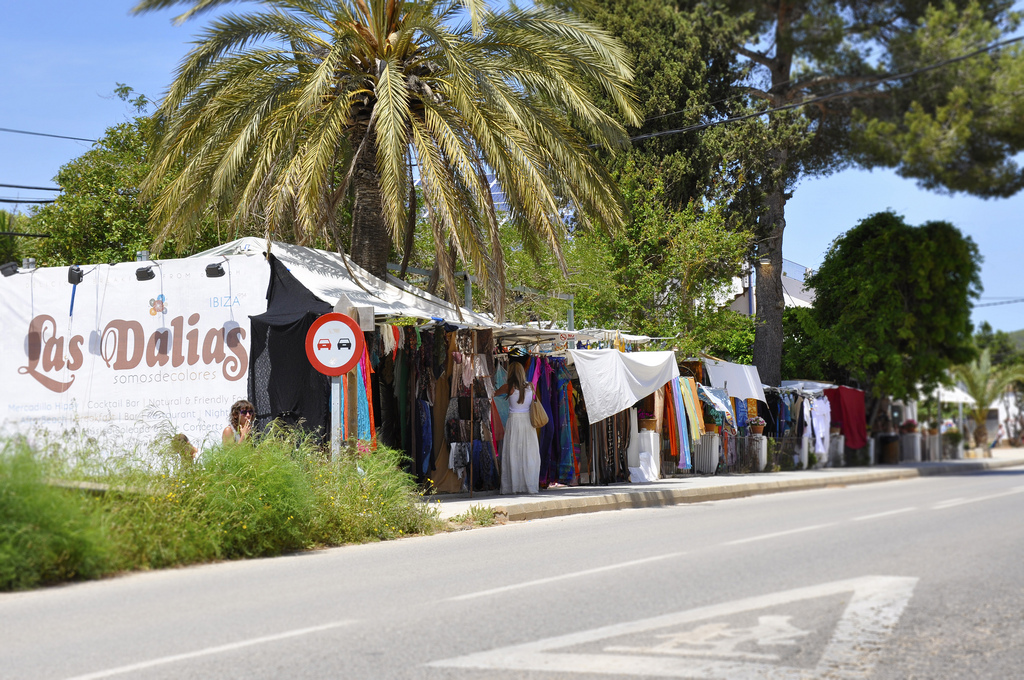
Next stop – Ibiza Troc. While this isn’t traditionally a market, it’s worth a look even if you’re not in the market for… well… junk, which is pretty much what it’s stocked with. Ibiza Troc – set on the road to Santa Gertrudis – is a huge old dusty warehouse filled with furniture, art and décor, ranging from genuinely valuable antique furniture and collector’s quality art to stacks upon stacks of promotional beer glasses for about 10 cents each. They say one person’s trash is another’s treasure, and I find it easy to get lost in here, just imagining the stories behind some of the absurd things you see – and also thinking about the potential for upcycling.
Then it’s back on the road and time to head up north to Las Dalias, for the final stop on Saturday’s market route. The famous Hippy Market is open all year round, and though it is toned down a little during the winter months, you’ll still find the best of the best stalls and sellers peddling their wares. It’s also a good spot to grab some lunch, because in my experience, market shopping makes you work up an appetite. This is the place to go for boots, handbags, boho-luxe jewellery, sheepskin rugs, art and modern day hippy style fashion – sadly, retail therapy at Las Dalias isn’t that cheap anymore thanks to its global reputation but it’s great people watching if nothing else. When Sunday rolls around, if your feet (and wallet) are ready to get going again, San Joan Artisan Market awaits. This low-key little village celebration sees the main square and surrounding streets of the quaint northern village transformed into a market, mostly showcasing locally made arts, crafts and clothes, plus organic goodies like cakes, bread and biscuits, olive oils, coffee and even beer!

Be sure not to linger too long because in the main attraction awaits, and as they say, it’s first in, best dressed and in this case, quite literally. The Cala Llenya Flea Market (or ‘Rastrillo’) is like the upscale, northern bohemian’s version of Sant Jordi. It’s a little less dusty (but still roughing it in a field), a little more eclectic (throw record collections, antiques and art into the mix), a little more highbrow (yes, you will find vintage fur coats and the odd designer piece) and a little more expensive (of course). I love Cala Llenya – it feels like a long way to go sometimes, especially if you’re hungover on a Sunday, but it’s always worth it. If you’re peckish, around lunchtime the restaurant onsite throws on a giant paella, and there’s a pretty decent covers band playing good old fashioned American rock tunes (albeit with Spanish and German accents, depending on the singer) and the whole thing is usually over by about 3pm. Which is good, because you need to get back on the road and over to Atzaro, where the new winter market is the perfect place to kick back as you celebrate reaching the end your weekend shopping expeditions. Stalls are chock full of jewellery, fashion, art and home décor, all with a boho flair, and your shopping is soundtracked by live music, accompanied by even more food and people watching. Then you get to go home and take stock of your loot! There are plenty more little markets that pop up in local villages to celebrate fiestas, or sit along the promenades of the port and seaside town, and don’t even get me started on visiting Formentera for a market visit! So much to do, so little time… so many potential treasures!

Julie and Rory met as teenagers, through mutual college friends at the tender age of just 17. The story goes that they continued bumping into each other at parties and clubs, sharing many adventures over the years that went on to include having two beautiful little girls and a wedding in Ibiza in 2015. “Rory surprised me,” says Julie of her engagement, which took place after an evening at a restaurant in The Shard in London. “I was so shocked (and extremely happy!), I think he had to ask a few times before the word yes came out.” Julie found her dream dress at Pronovias – a stylish Mardil dress featuring a lace bodice and train, accessorised with shoes by Rachel Simpson, jewellery by Jenny Packham and a head dress by Liza. Rory opted for a blue three-piece suit from River Island, accessorised with Vivienne Westwood cufflinks and a bowtie from M&S. “Perfect for the 35-degree heat!” laughs Julie in retrospect. The big day took place at beautiful Ibiza wedding venue Elixir in Cala Codolar on the island’s west coast. “We always wanted to get married overseas, and we both love Ibiza, so it was the perfect choice.” The couple found the venue after doing much online research, and were instantly won over after visiting on an open day, however they were saddened to learn the venue had no availability until 2016.
“We were really disappointed and started to make plans for the following year,” says Julie. “I said to Rory, ‘I wish they’d get a cancellation for this year,’ and he said ‘It’s not going to happen.’ But then the following week we heard there was a cancellation! It was fate – we got married on July 3, 2015.” Once the date was set, Julie and Rory called on the island’s most in demand wedding photographer Ana Lui to capture all the beautiful details on camera. Julie and Rory took on a lot of the wedding coordination responsibilities themselves, alongside the expert team at the venue. Julie designed the name cards, seating plans and table plans herself, and The Lovely Laura was booked to provide her unique form of Ibiza style entertainment. Having a child-friendly venue was important to the couple, who also enlisted the services of Mini Ibiza to take care of the little ones on the day. “During the meal and our speeches they were brilliant.” “The food was the most amazing ever!” says Julie, of the deluxe steaks, perfectly roasted potatoes, grilled Mediterranean vegetables and hearty fresh salads prepared by the Elixir chefs. “The staff were absolutely amazing too,” says Julie. “I would recommend the venue to anyone. We could not be happier.”
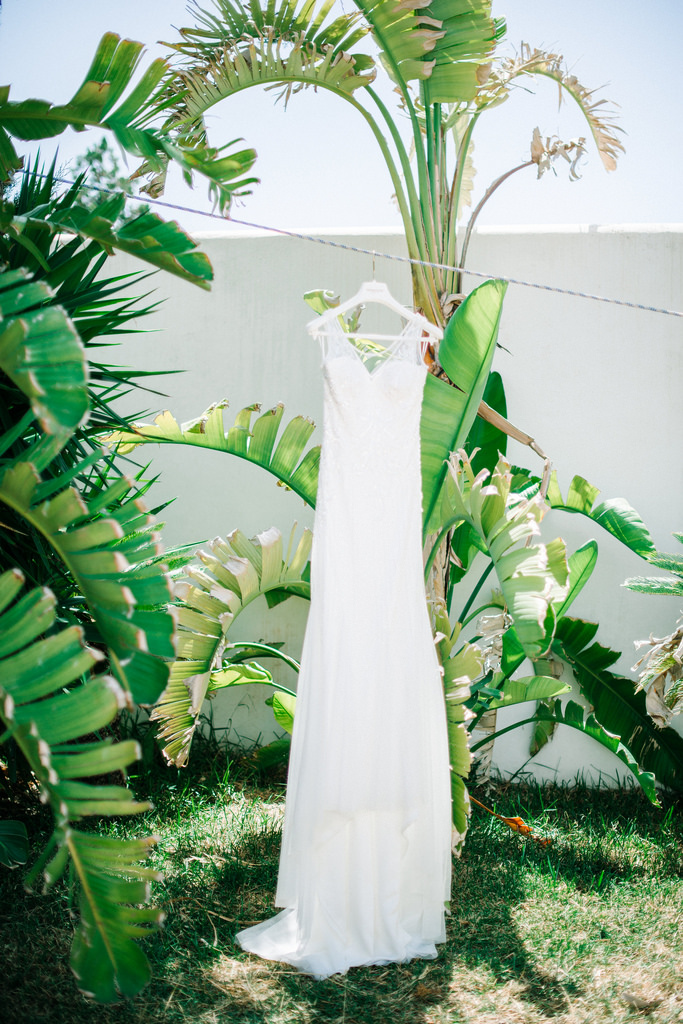
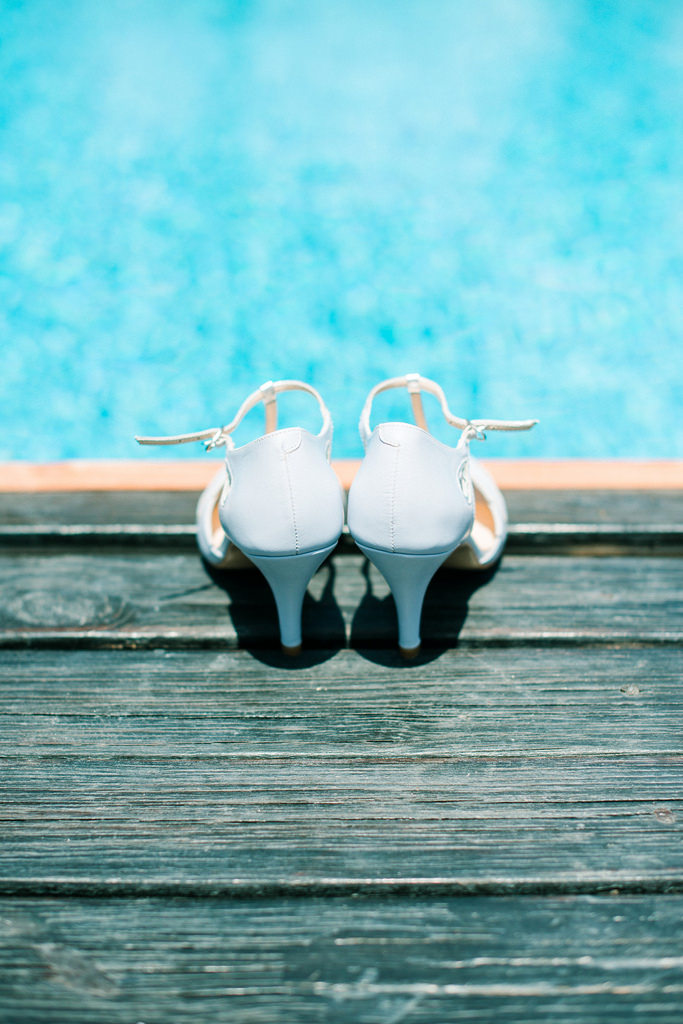
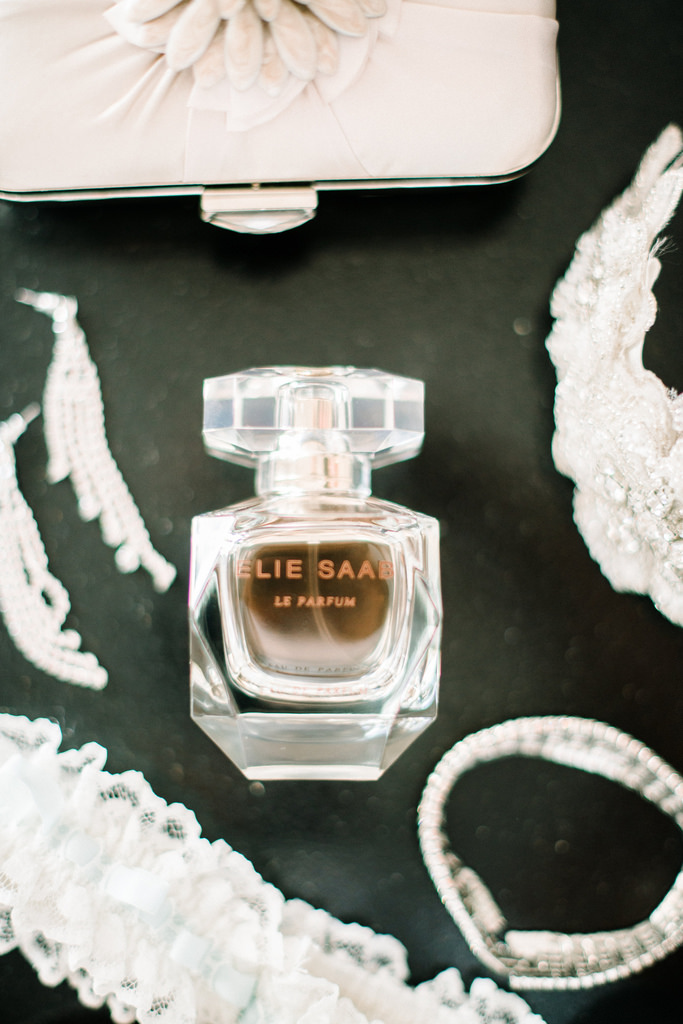

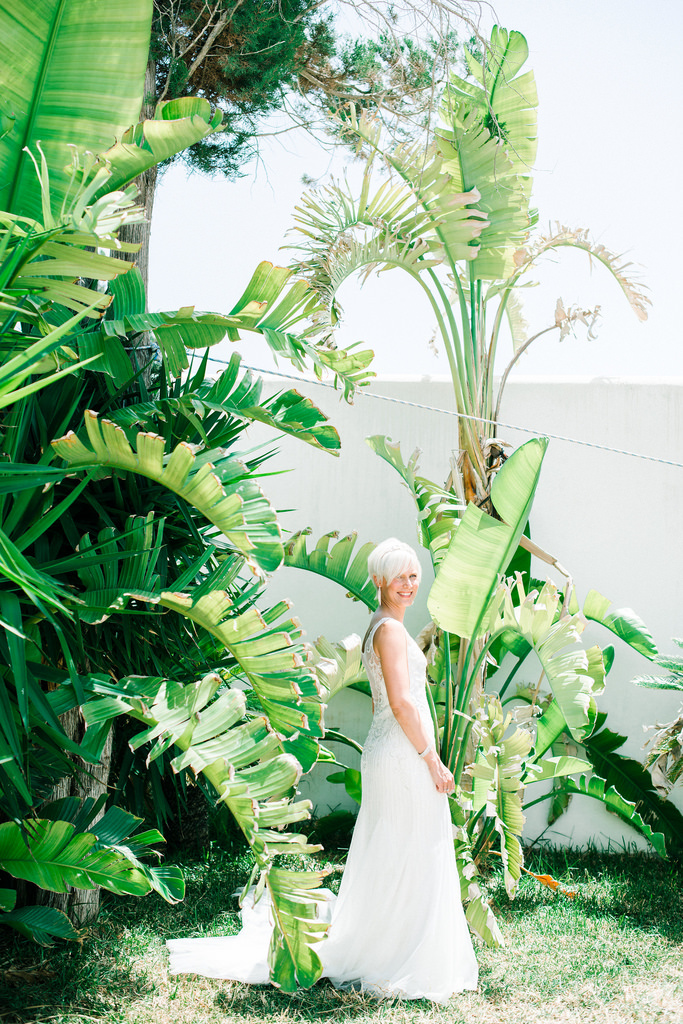
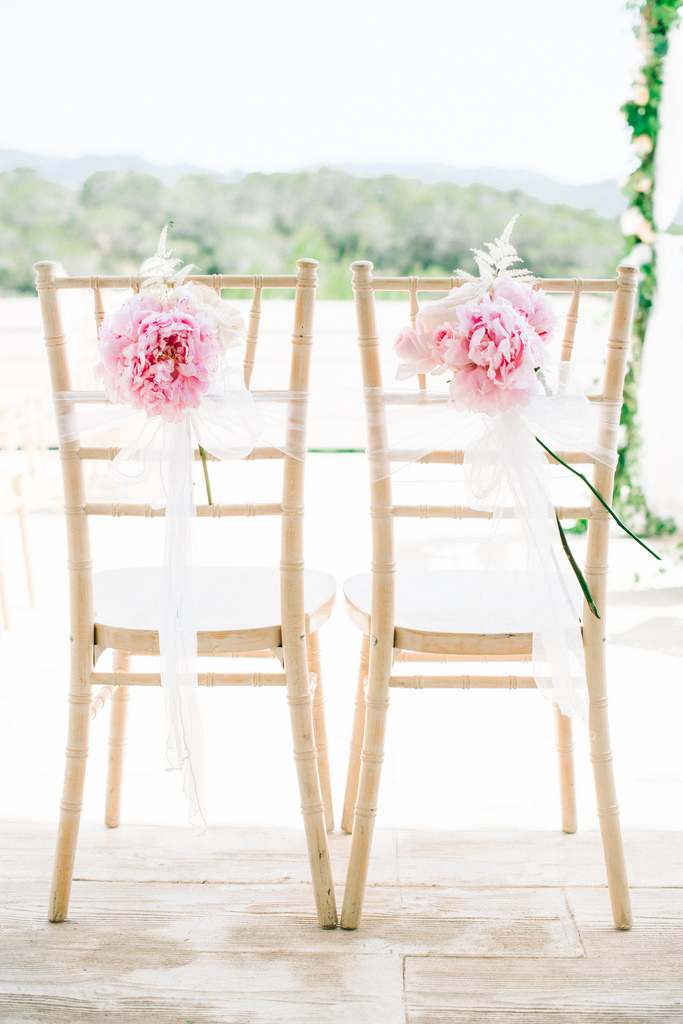
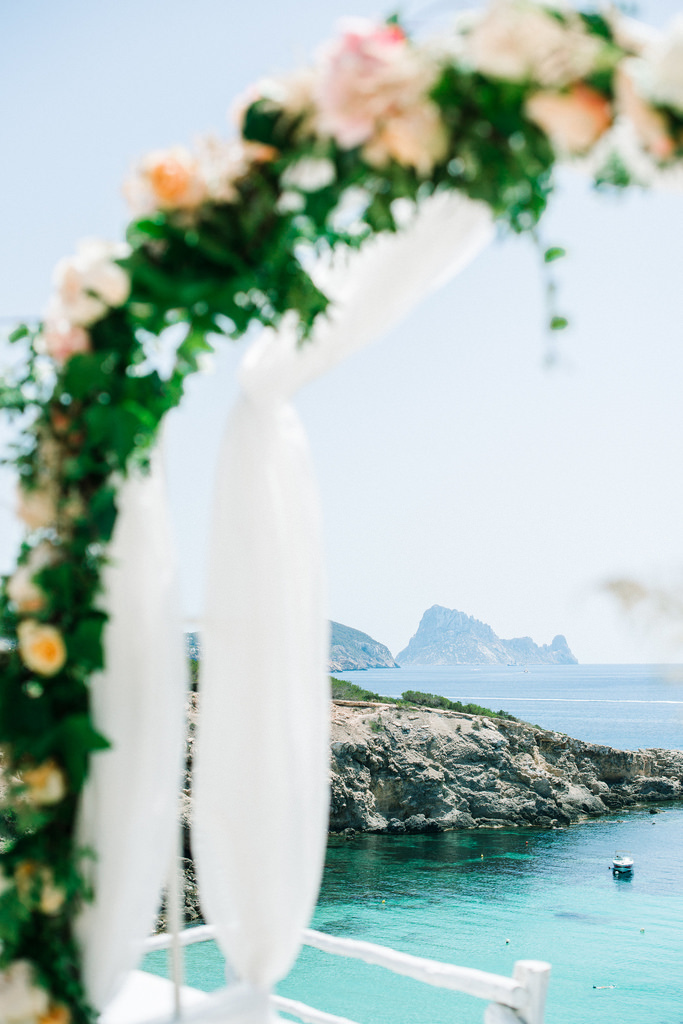
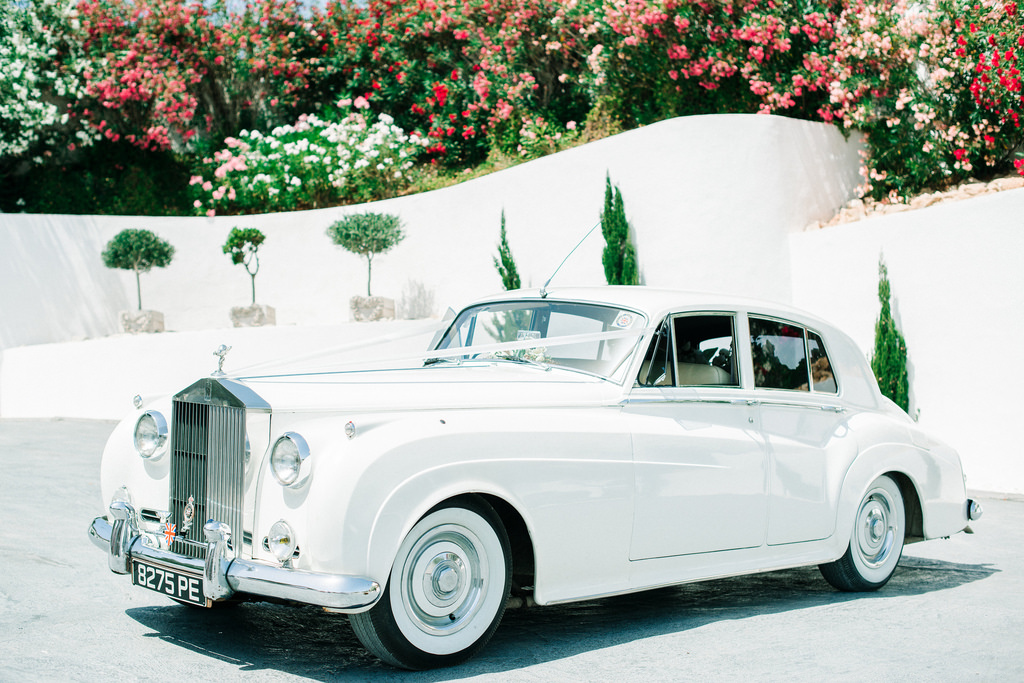

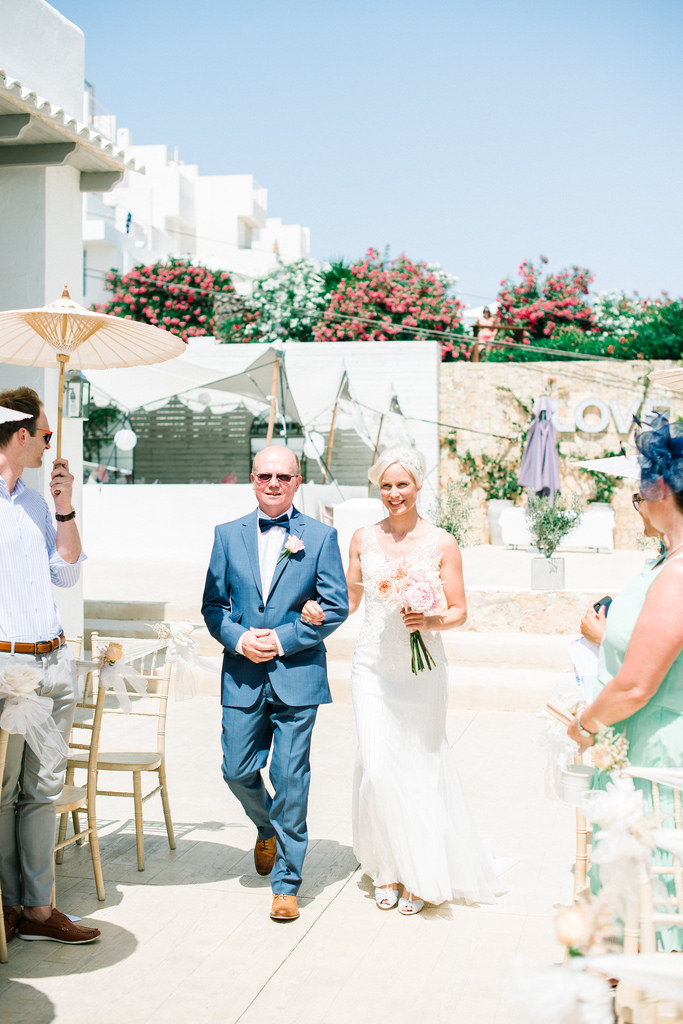
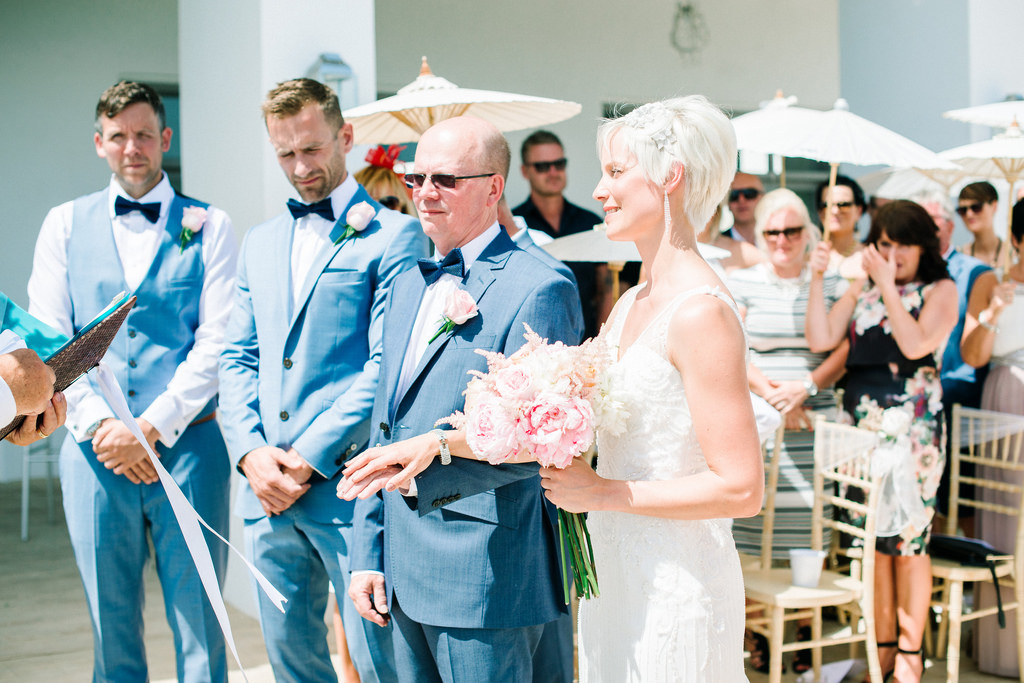



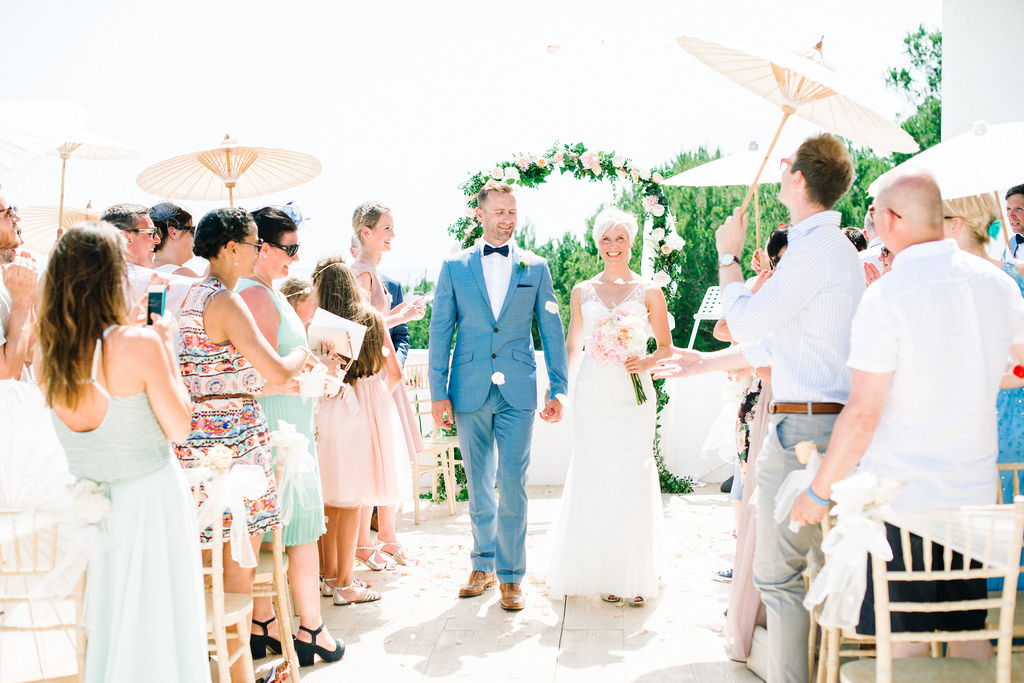
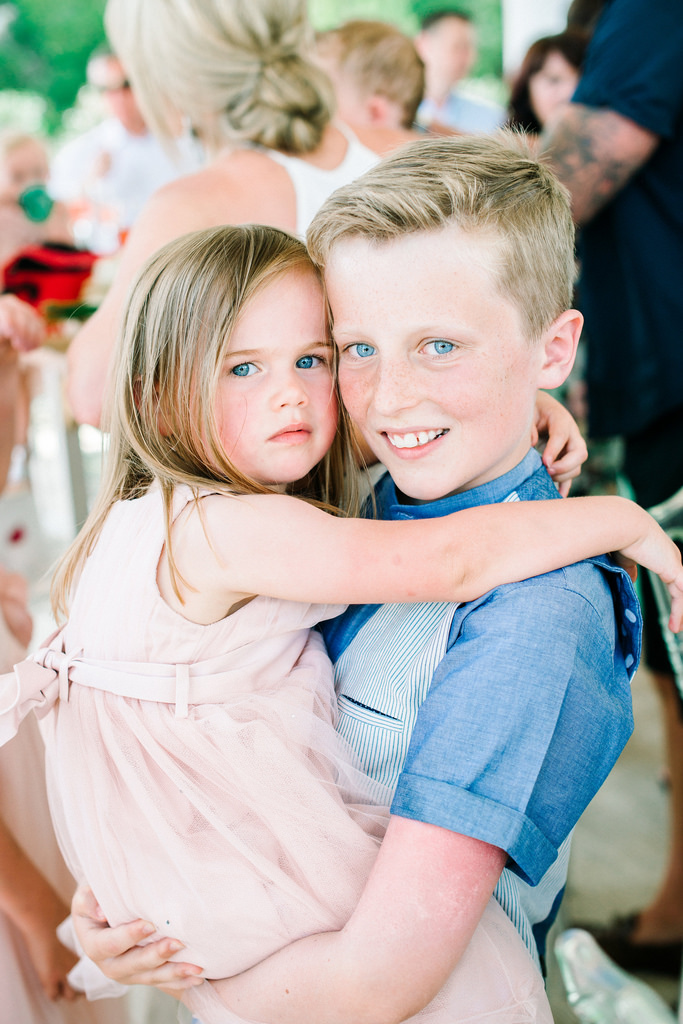
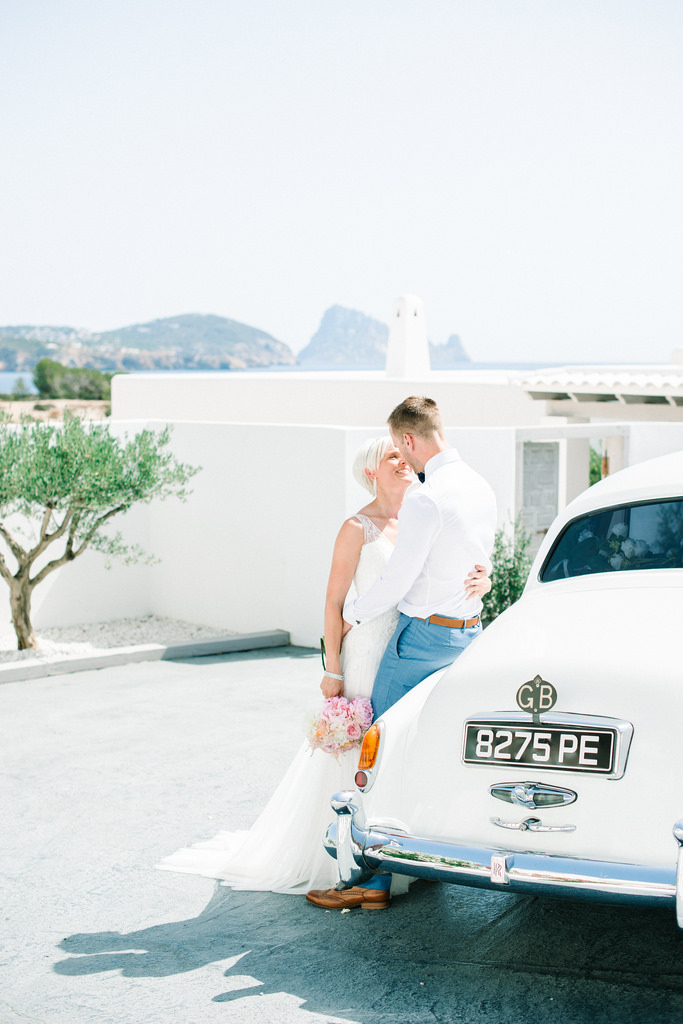
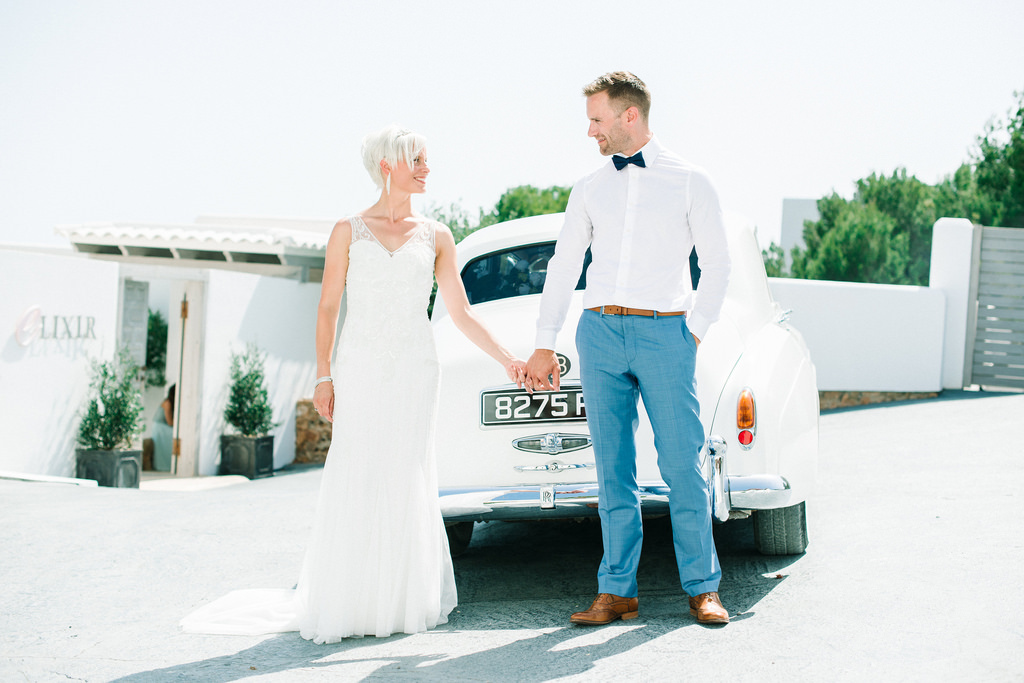
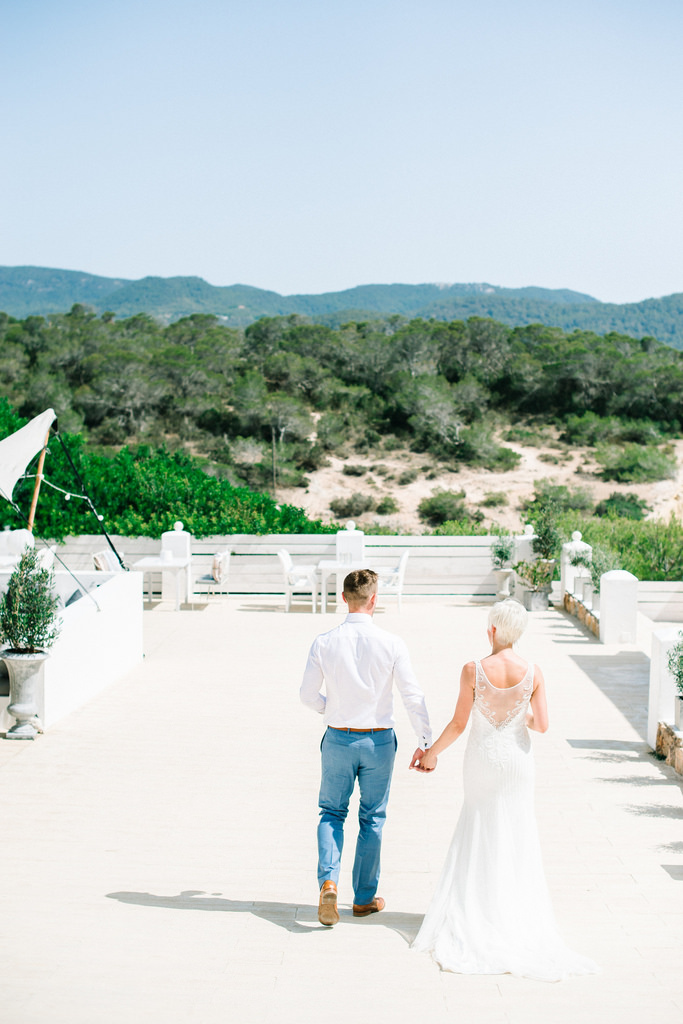
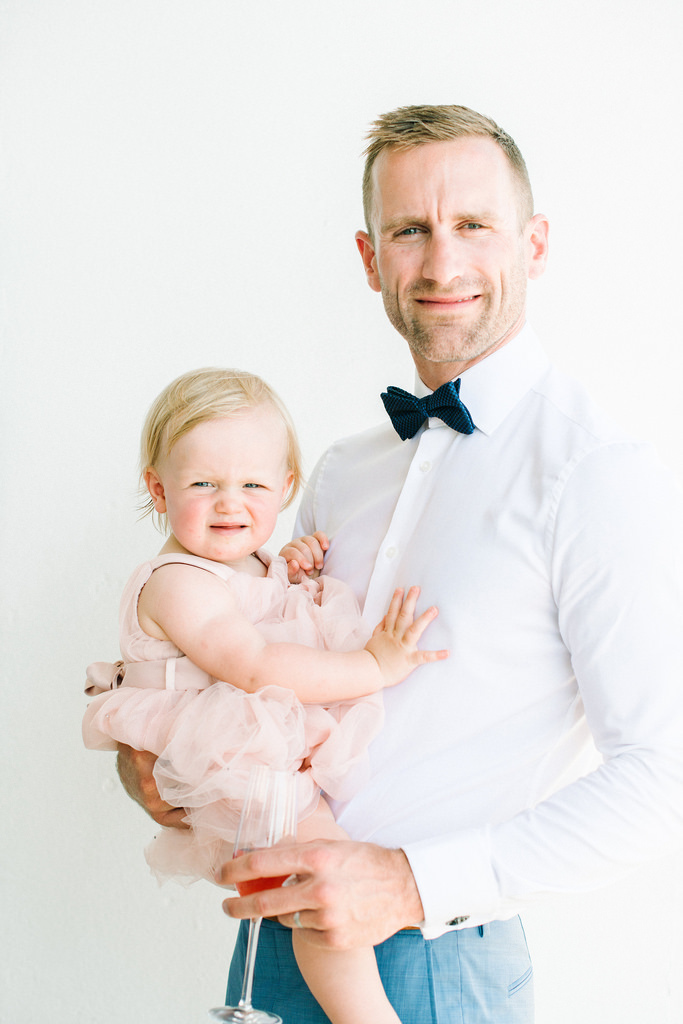
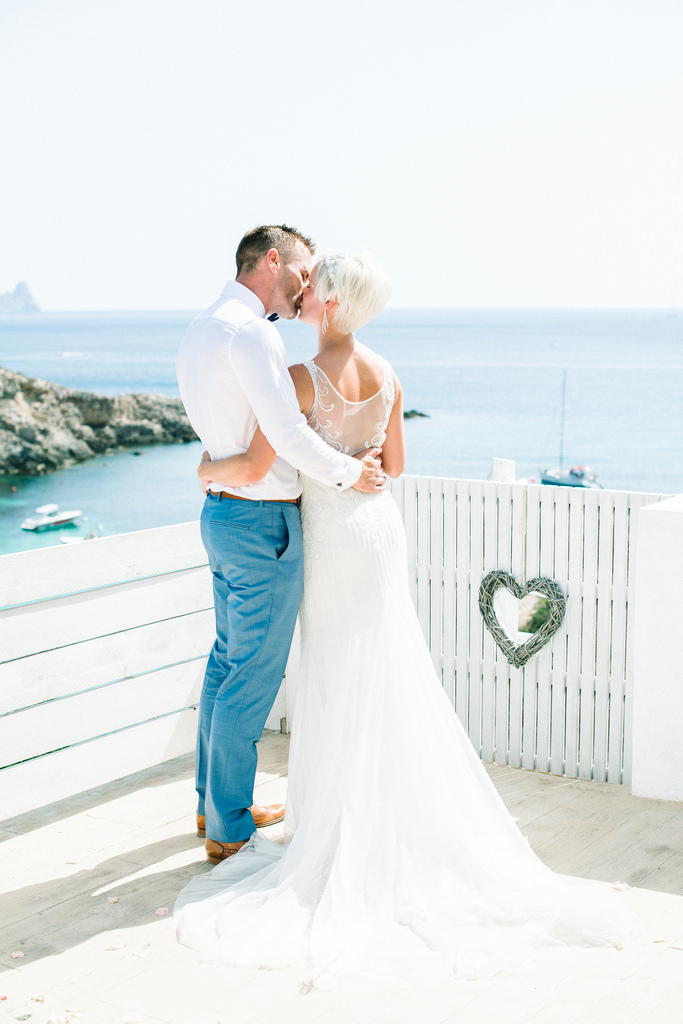
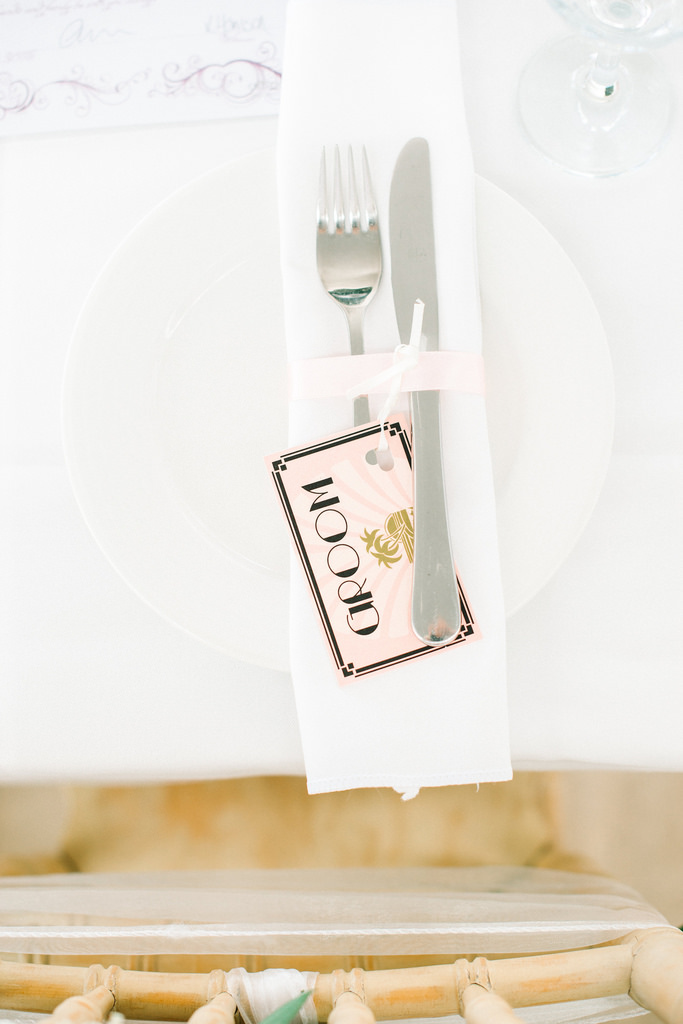

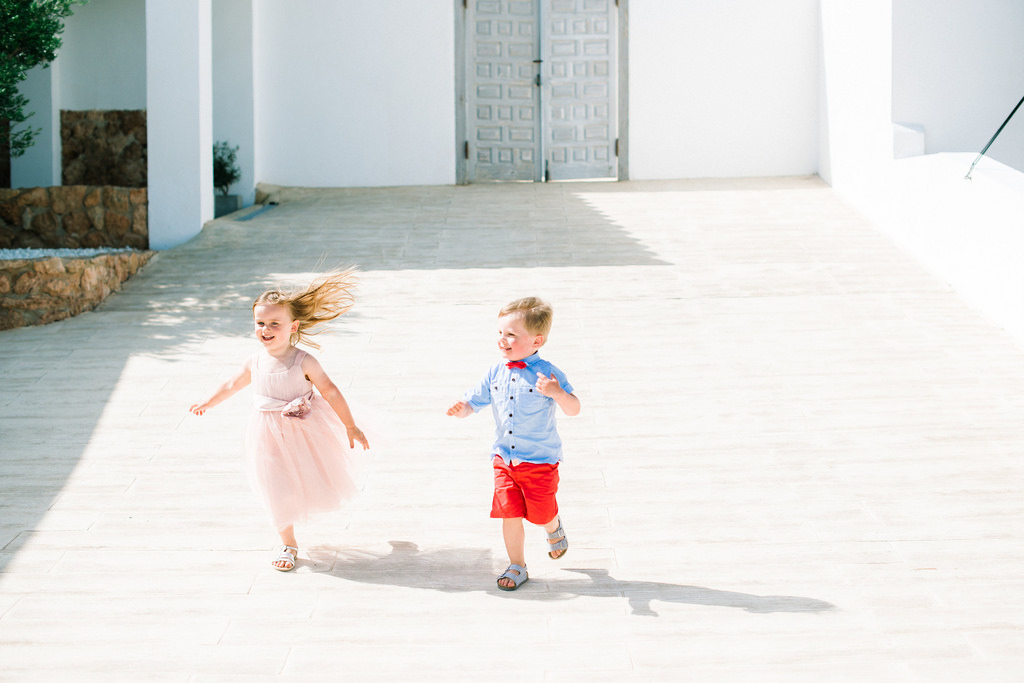
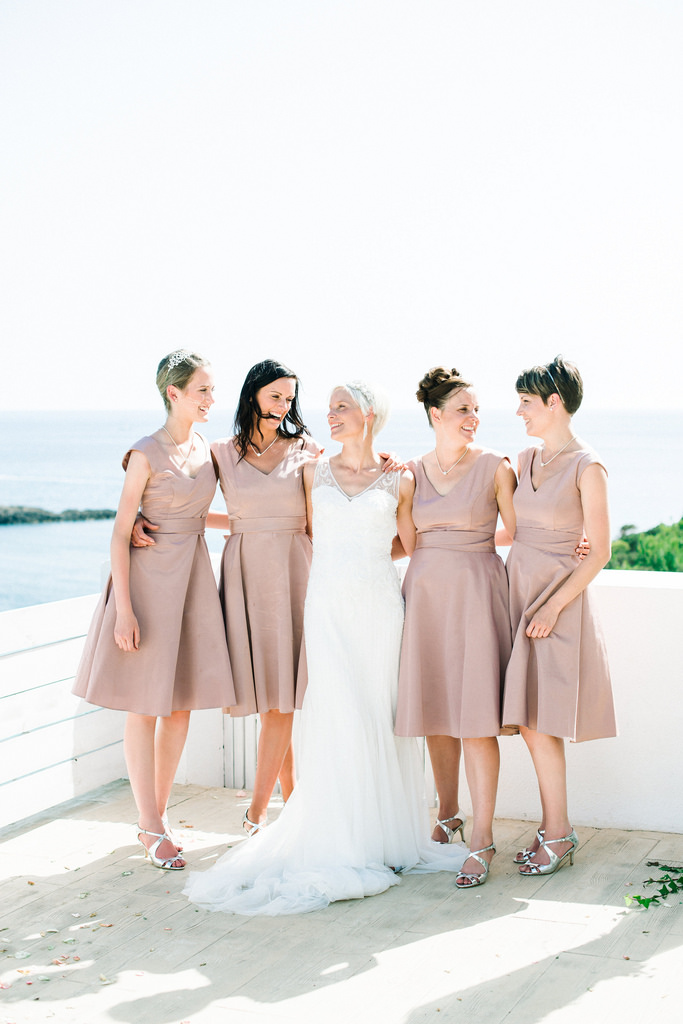
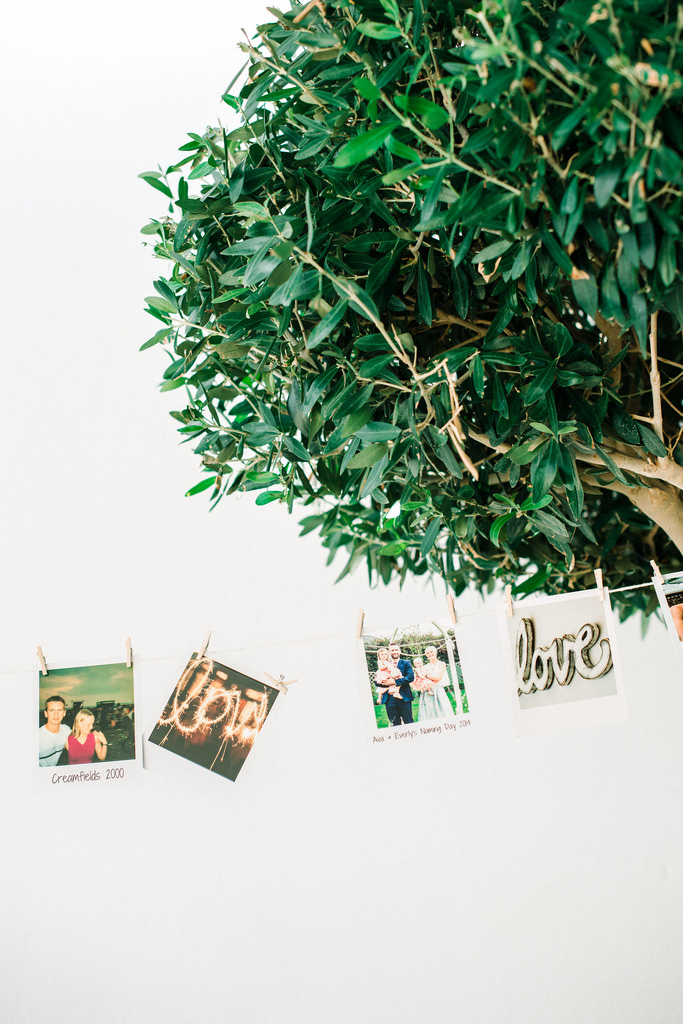
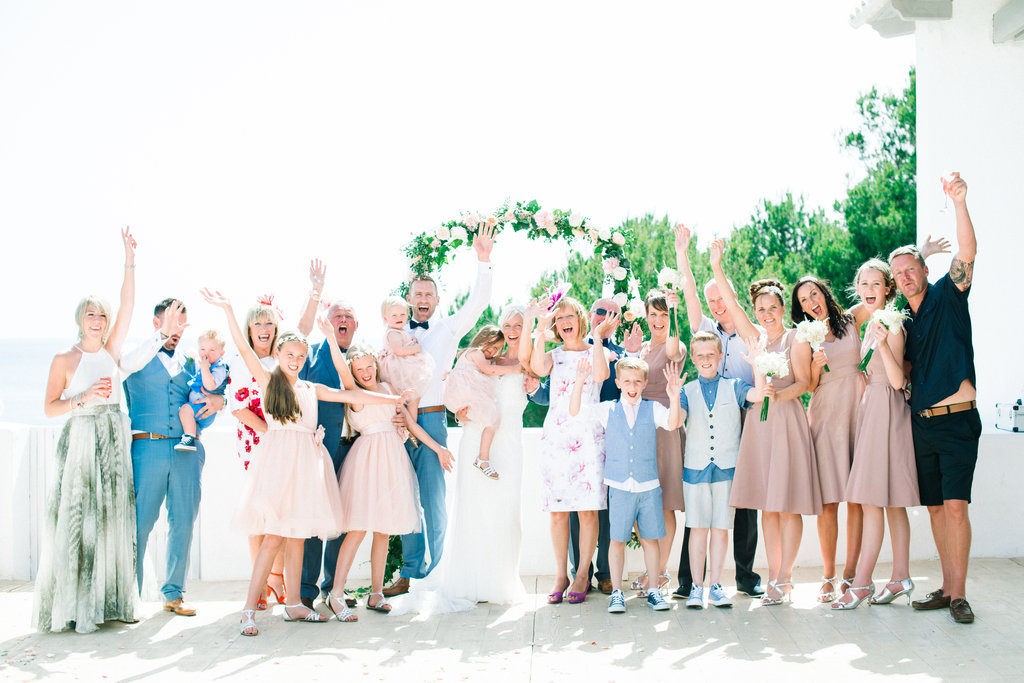
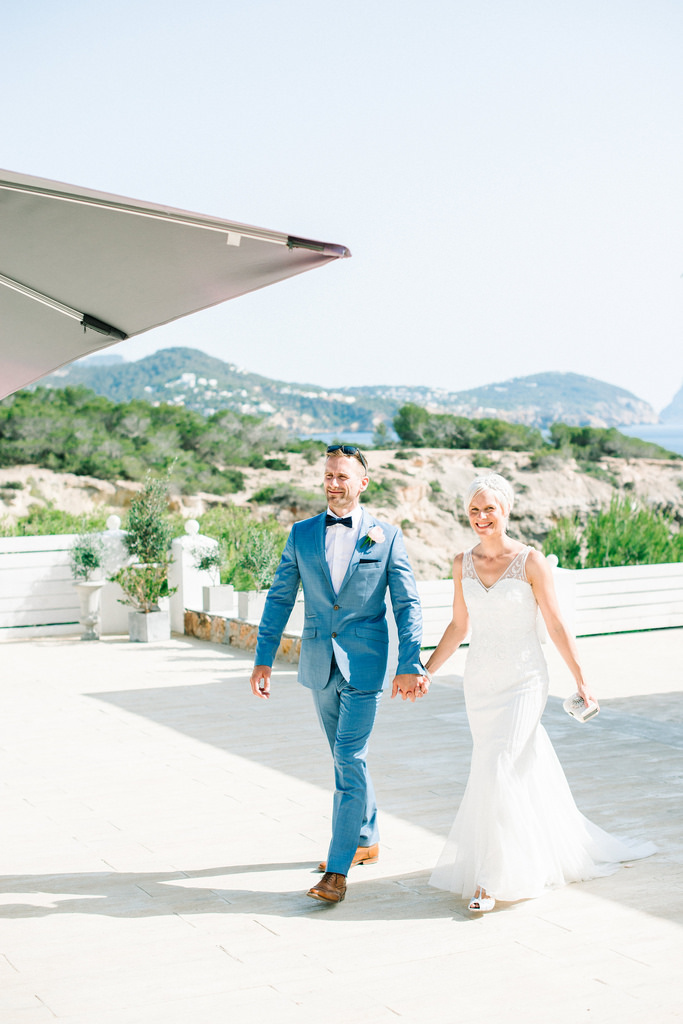

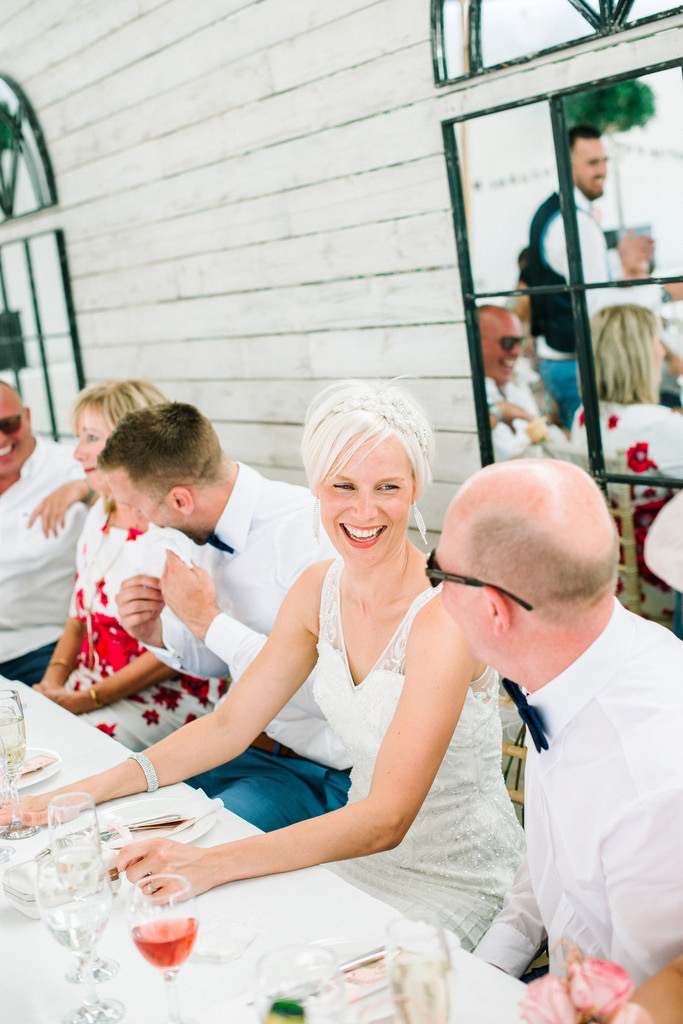
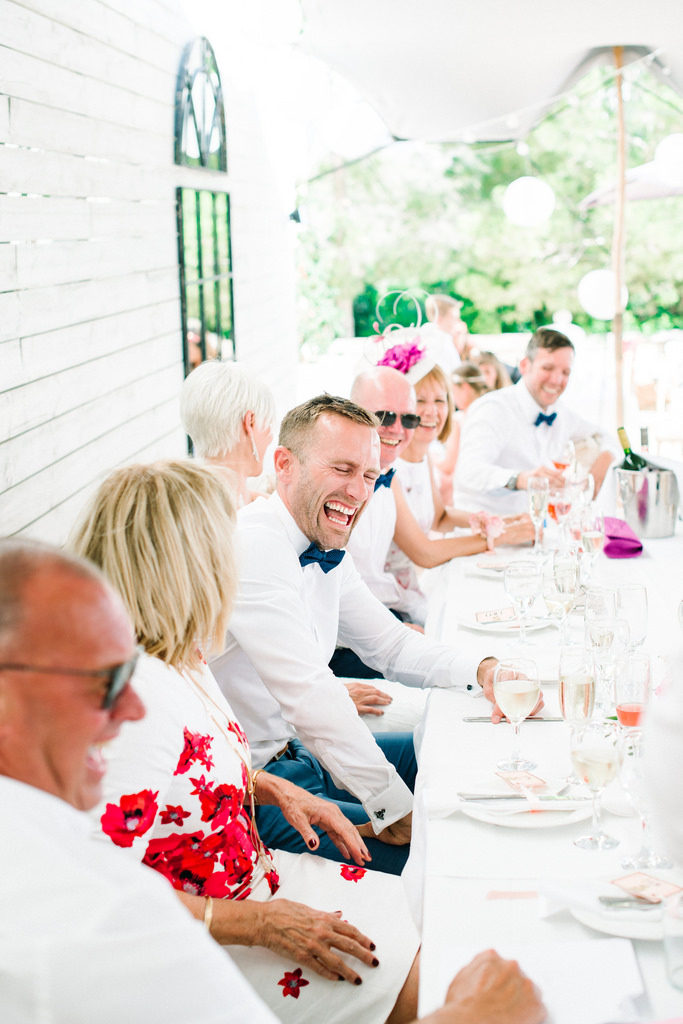
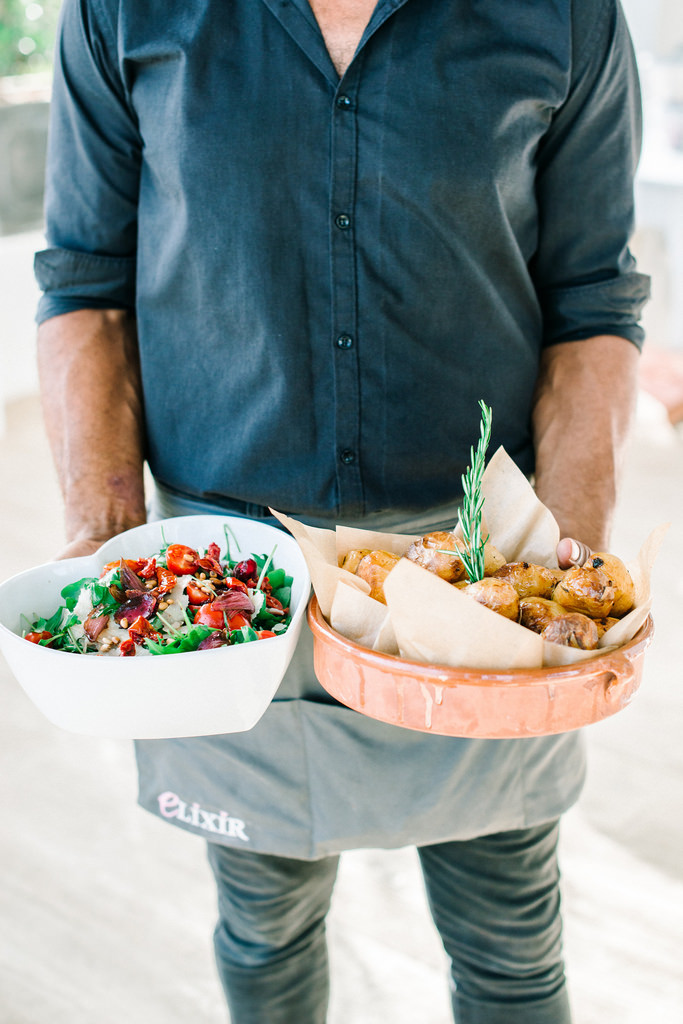
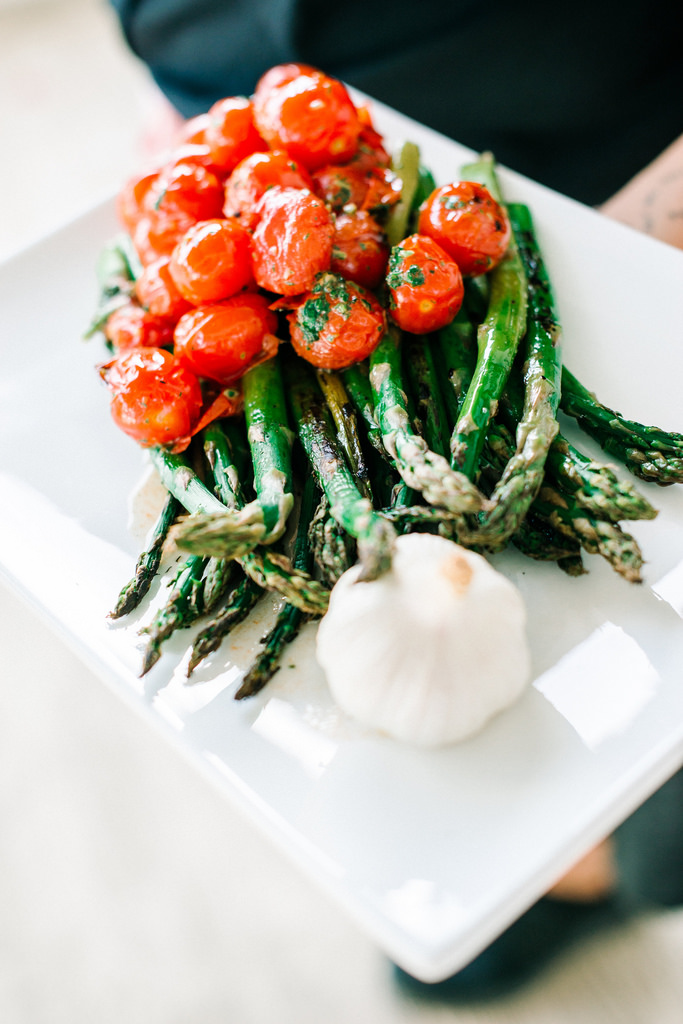
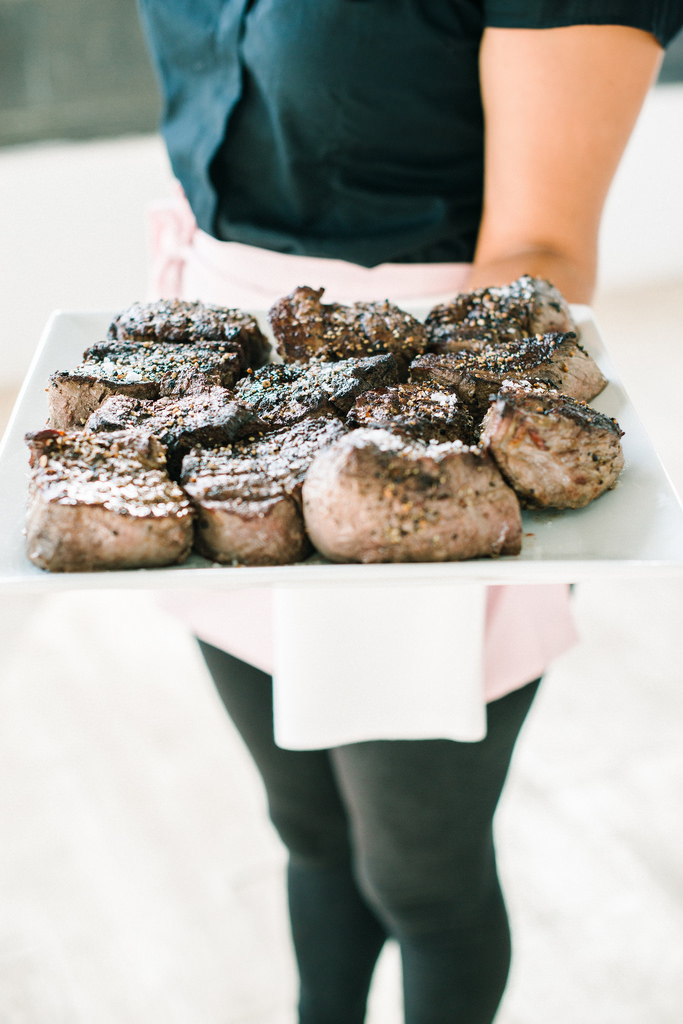
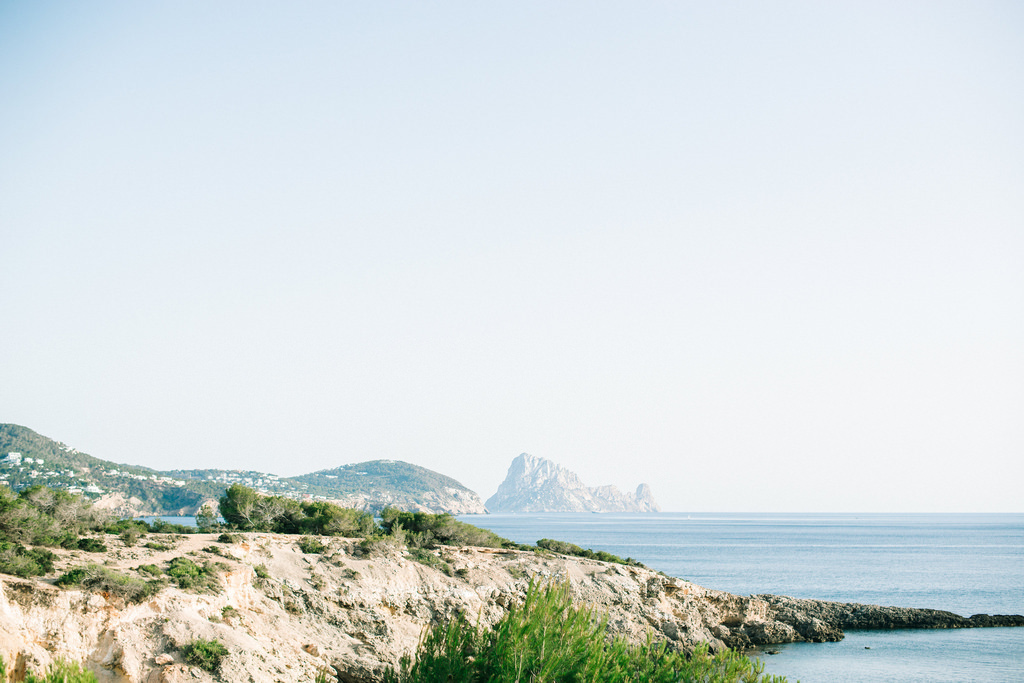
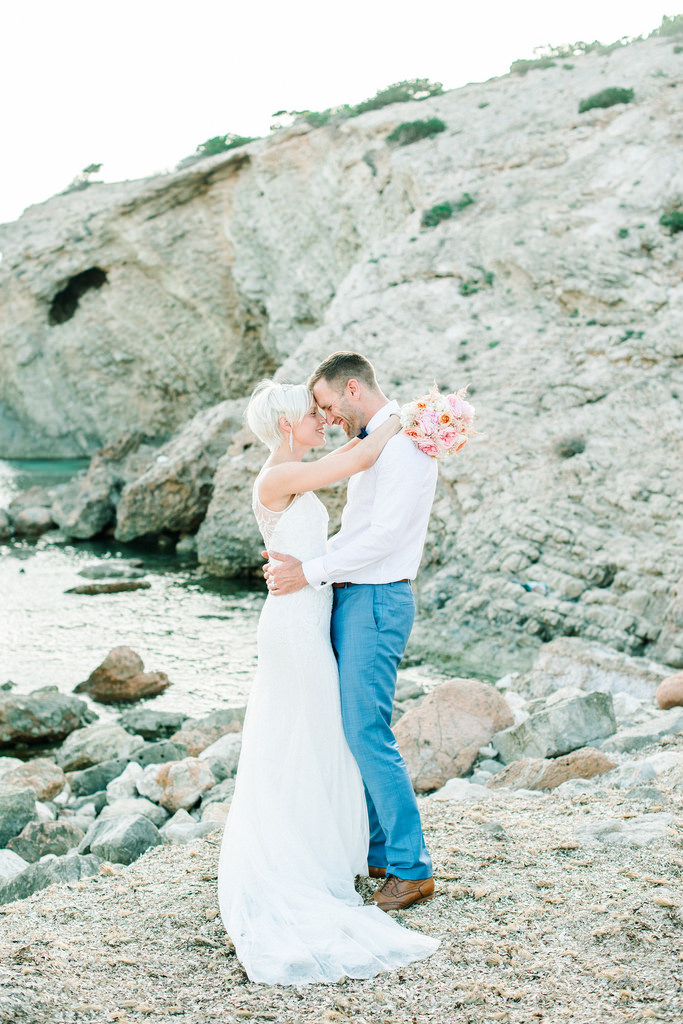
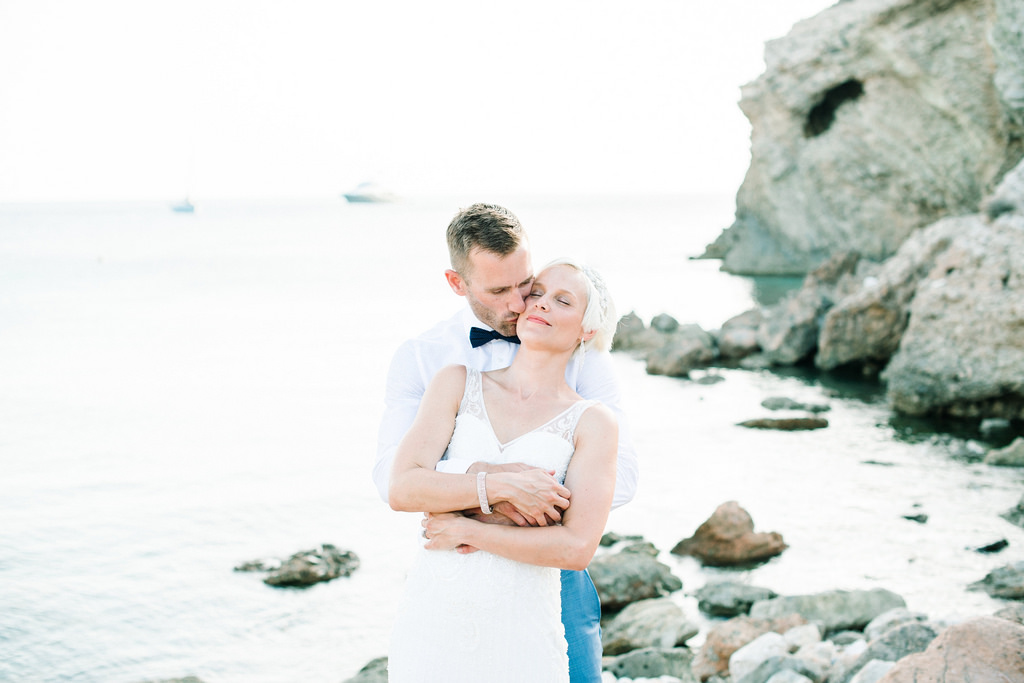
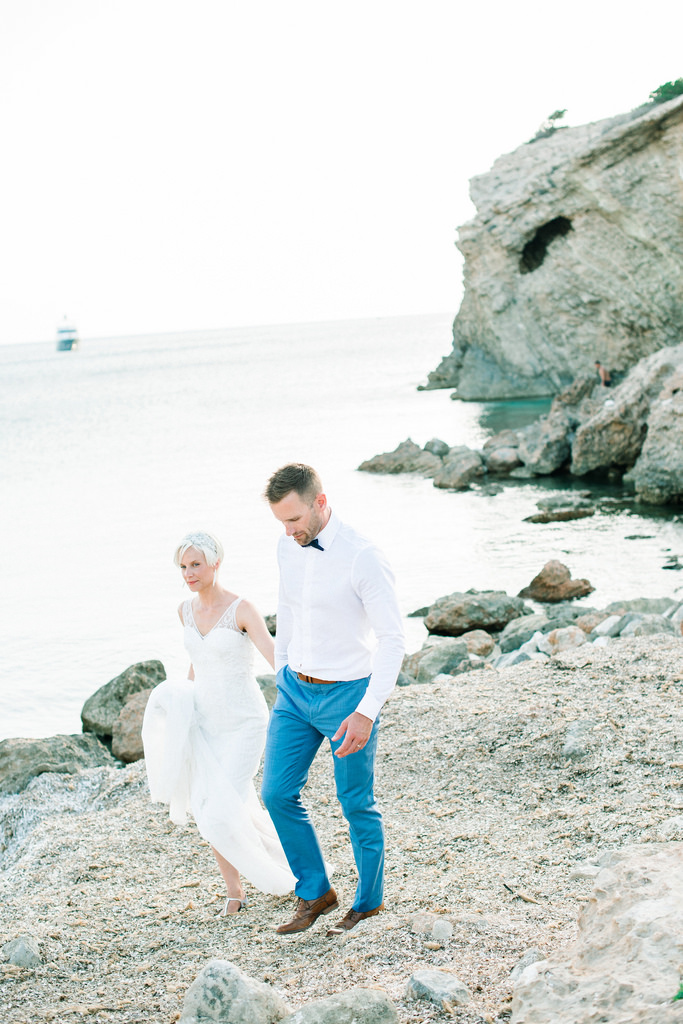
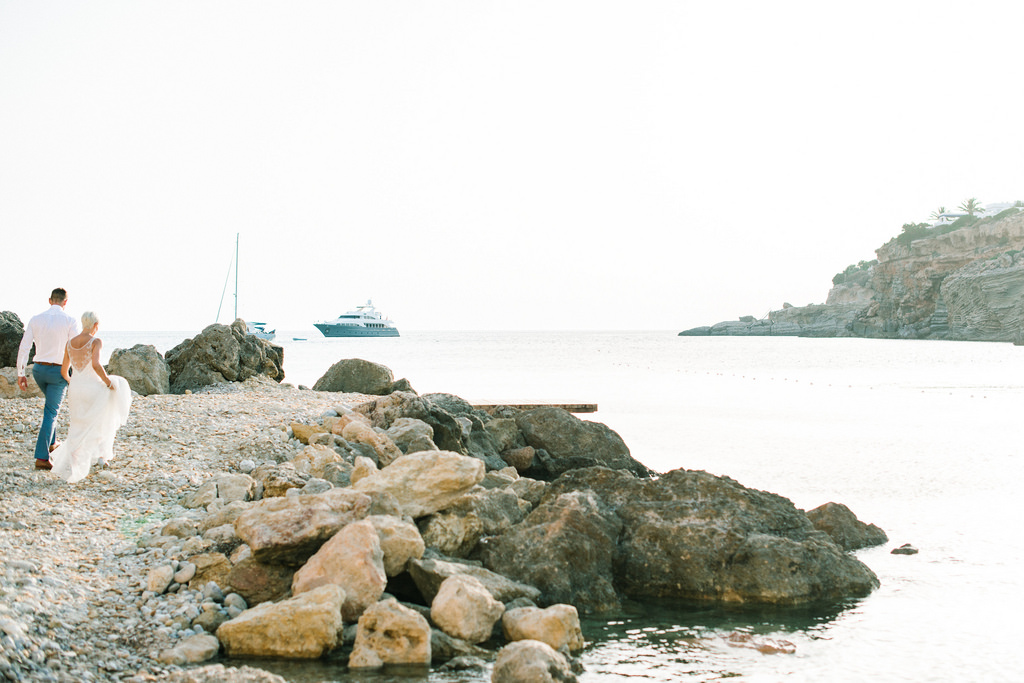
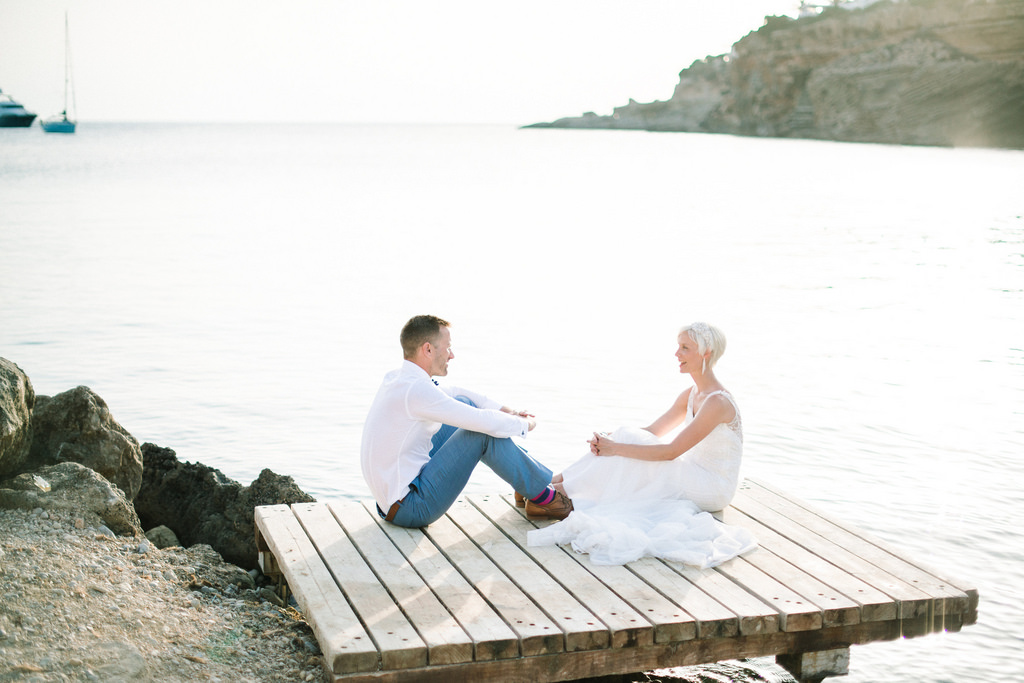

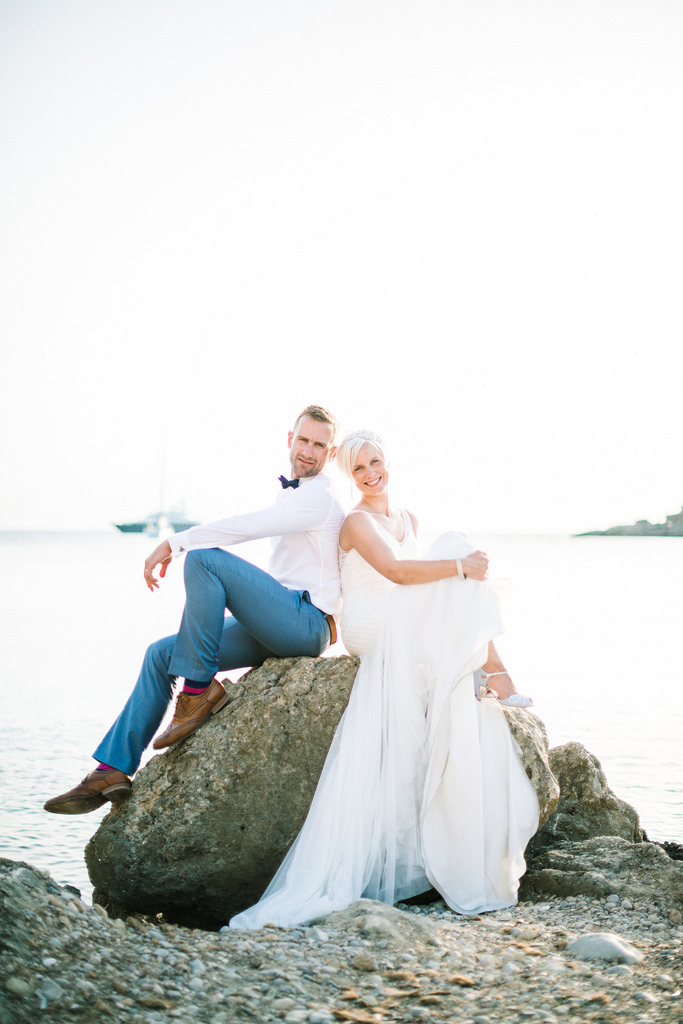
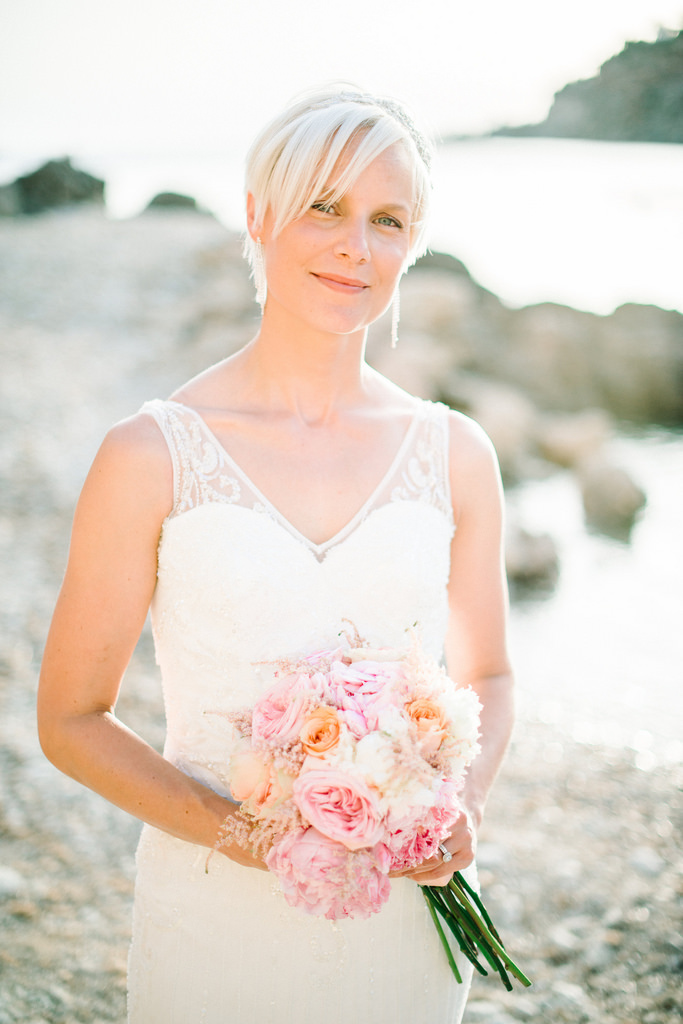
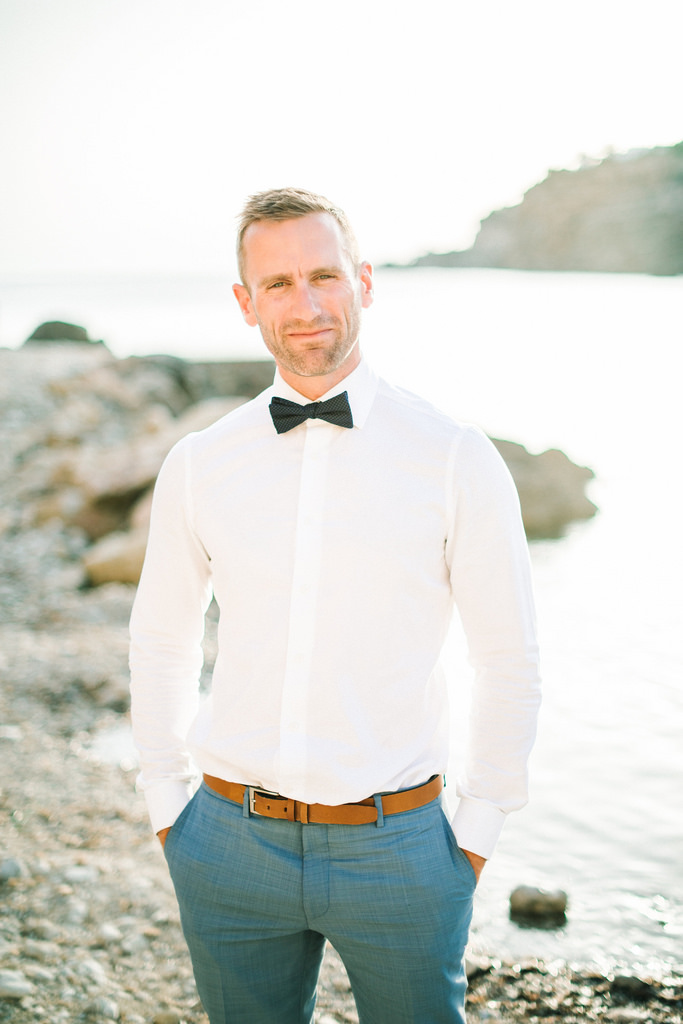
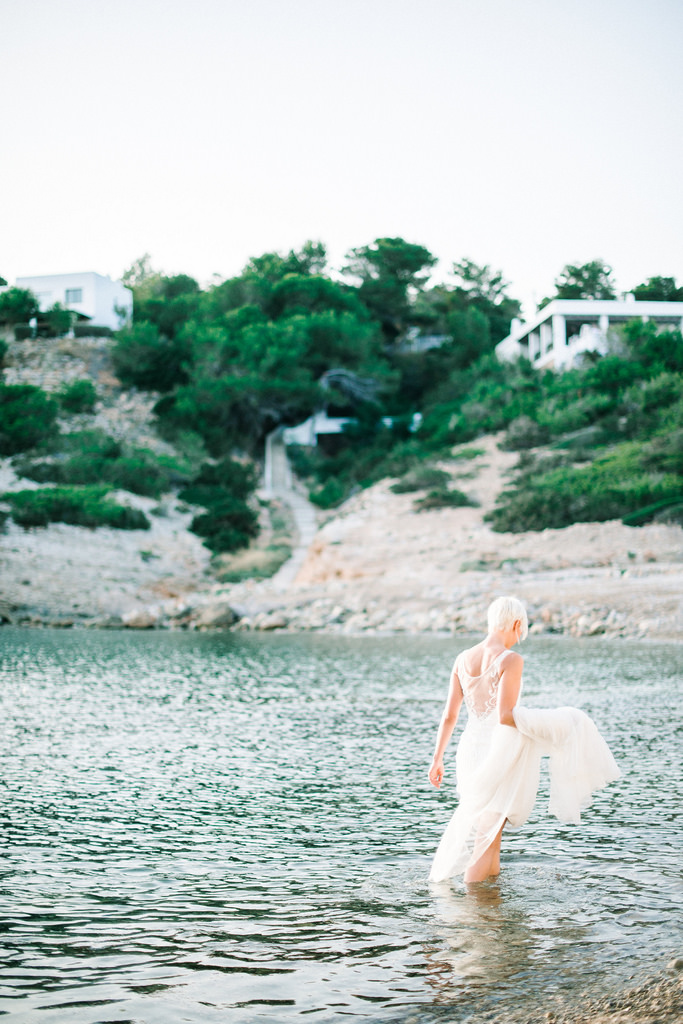
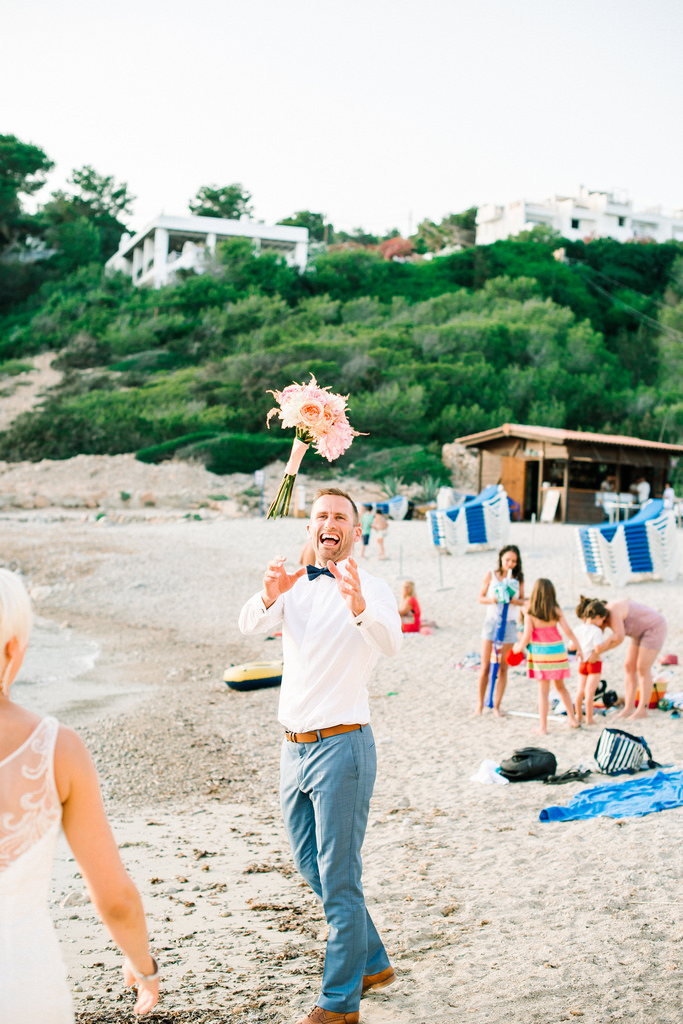
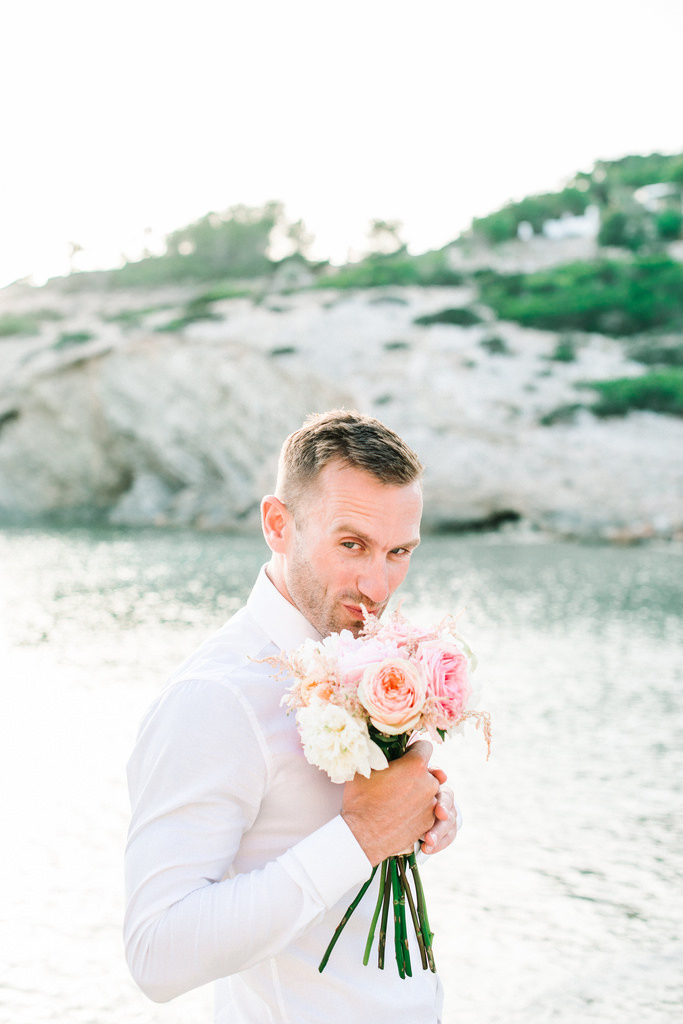
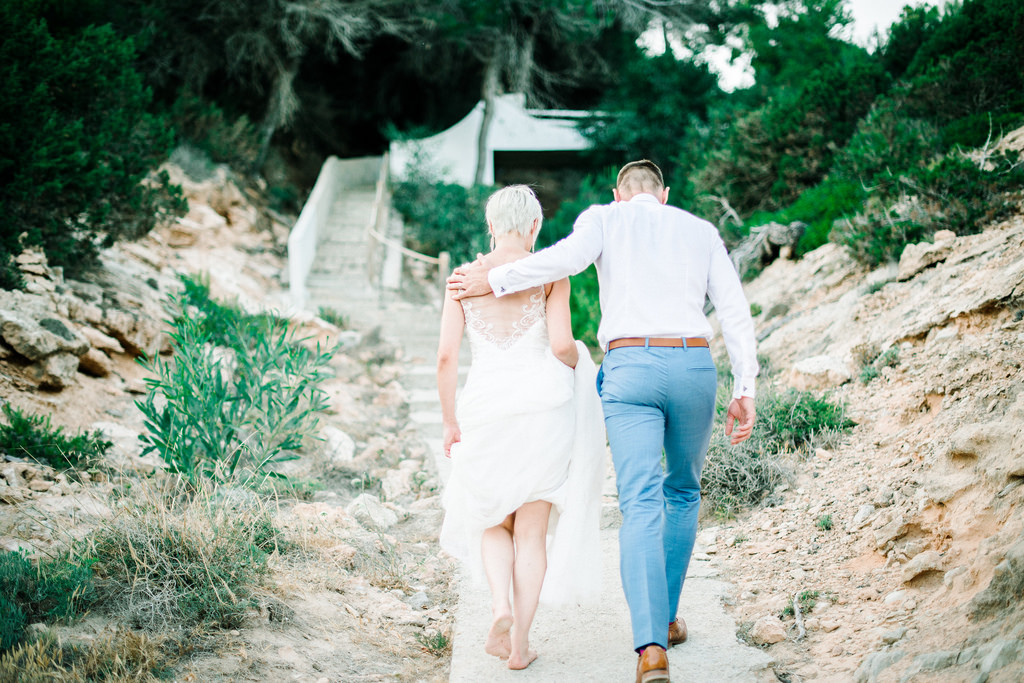
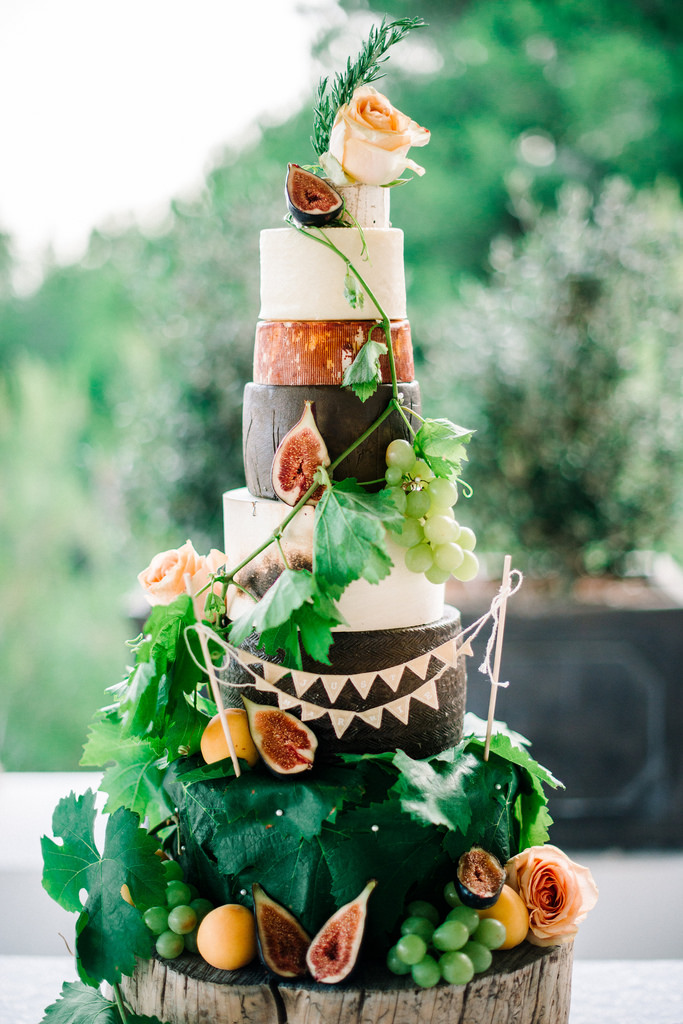
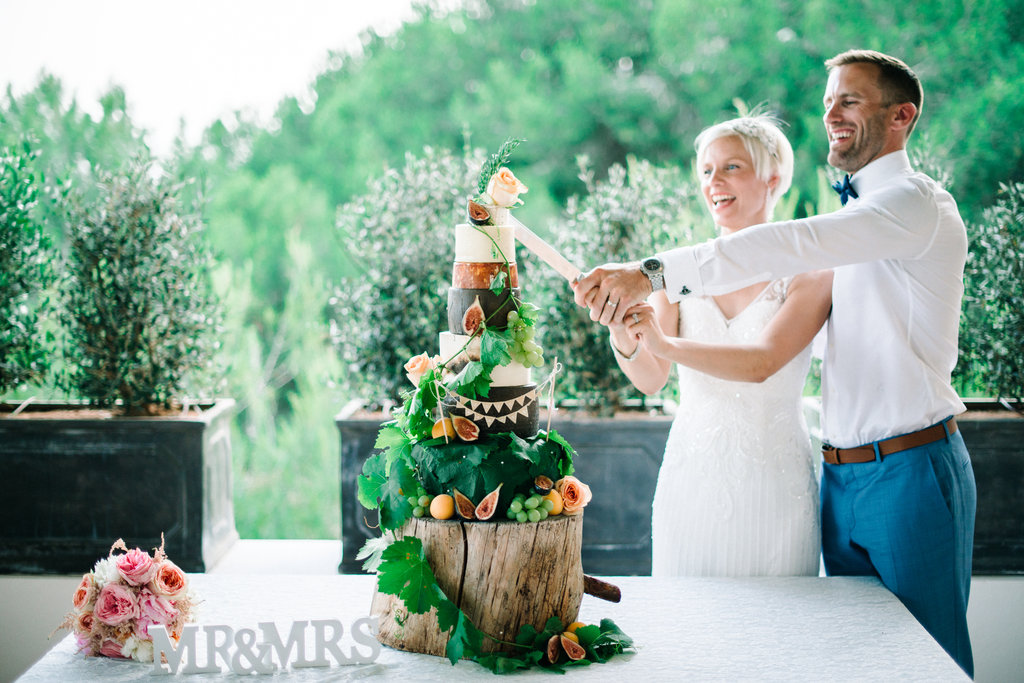



“After a year and a half living in the old town of Ibiza, my wife and I moved to Santa Eulalia, then a lovely village set among orange groves by the sea. It was a lush orchard. A network of irrigation canals called sequias fed by the river ran to all the farms surrounding the village. This was the reason for the richness of the foliage concentrated out there. In the summer after the heat of the day, the sequias were opened and the water poured out like molten silver through the maze of little trenches under the orange trees. The air became vibrant with freshness after the long dry hours of the afternoon. The soft sound of the waters rushing could only fill one’s heart with contentment, completeness. Mary and I would set out on walks, to be away for a few days at a time. We carried blankets so that we could roll up on the ground, wherever the night found us. There were no hotels on the beaches, only the odd fishing boat puled up on the sand. In this way we walked around the island not at one go, but little by little – exploring the island, returning home to Santa Eulalia after a few days.
On our return, trudging down the dirt road which was the main street, we would be hailed by Toni Ferrer, owner of the general store called ‘Las Delicias’. He would pull a little wooden table out onto the road, bring chairs and glasses, and wine to celebrate our safe return from darkest San Carlos where only ogres and witches lived. It is difficult to realise now, with paved roads leading to nearly all parts of the island, how large Ibiza seemed when there were only a few old cars on the island and the roads were dirt tracks. There were two buses in Santa Eulalia. They had been fashioned on the chassis of two Russian military trucks that arrived somehow in the Civil War. As the buses had been constructed by boat builders, they were made of wood and were pointed at both ends. The sterns swept up high like on Spanish galleons and gave the buses the appearance of female cats in heat. The wooden benches inside were arranged so that you sat knee to knee with your fellow passengers, thus having to share on your lap the chickens going to market. Some parts of the island had always been cut off. San Vicente did not have roads, only footpaths. A lateen-rigged felucca sailed twice a week to Ibiza bringing eggs and other produce to market.
Some of the valleys in the mountains behind San Vicente, remote even today, had the remoteness of Tibet in those days. The remoteness was, of course, not to be measured in kilometres, but in cultural communication which is a relative perspective. Someone says to me today, “Oh, you live so far away.” I think, “I don’t live so far away. Far from where? Far from his house, he must mean.” So the remoteness that we felt in the valleys was the distance from our own cultural conditioning, cultural system of techniques. The cultural system of the valleys of San Vicente was old, historically. The techniques used in farming and house building, in custom and belief, had been in use for a long, long time; in use before the city of Babylon flourished. In use long before they were brought to the island, because cultural systems are exportable. So that from a cultural point of view, the distance between Mary and I on the one hand, and the people of the valleys on the other, was one of cultural time.
Now when I speak of the ‘mood of a place’, I do not mean something imaginary, something subjective, something seen in the eye of an artist. It is something real. You don’t have to believe in it. It works anyway. It is the mental field, the psychic impress on the environment, the aura, the etheric climate. It is changeable like the weather, but it is a mental field, mental-magnetic charge, continuum. It is highly susceptible to human mental activity. As the activity, mental and physical of the people in these remote valleys had been more or less constant during millennia, the mood of the place had long been very stable. It was as much a cultural reality as one could ever hope to find. It was a 90% trip back into the ancient world for us. For those who lived there, it was just normal life, and they came out of their houses to stare at us as if we had just landed from outer space, as well we might have done. The human mind is in a continual state of interchange with the psychic plasma, the mental impress in an environment: A group of fishes asked a wise fish, “What is water?” The wise fish answered, “It is all around you.” It is the travelling fish that can taste if the water is more salty or less salty in other parts of the sea.
So that people following certain activities, certain ways of farming, certain ways of thinking, create a neutral climate in the place where they live. The mood becomes stabilised and reinforces itself by a return influence on the minds of the people submerged in the field of that environment. This is called karma in the east. The mood is the karmic impress. If a group of people remains isolated for long periods of time, it is probable that their cultural practices will be stabilised for long periods of time. In a situation where small groups of people remain isolated from each other over a long period of time, the idiosyncrasies of each group become stabilised. Each little group becomes like a little kingdom until itself. It becomes difficult for these groups to influence each other or to be influenced from outside unless there is a truly fundamental shift in the economic and technical systems of cultural force impinging from without.
The impingement is mental. There is a mental breakdown, a devaluation of the existing cultural system, if the process goes beyond a certain point. Thus we found ourselves wandering in the remote valleys of the past. We were in living contact with the people of the ancient Mediterranean. Our journey to Ibiza had been in Time as well as Space. I know now that it was in order to learn from the people and the place that I had come. Whatever it was that I found missing in twentieth-century industrial culture I found present in the ancient culture of Ibiza. I speak always as if this quality no longer exists in Ibiza. The island is still a magical place. But the qualities that I once experienced have been superseded and diminished by others. That intense, pungent presence in the countryside where I could feel the god Pan lurking, pagan nature, the very stones singing: all that vanished in the year 1960.
I had returned from a four-month journey to India and found a new feeling on the island, as if the magnetic tapes had been wiped clean. The stones were now neutral, silent, cleansed. It was as if the stage has been cleared in preparation for a new play – change in the air. I sensed that the god Mammon was to replace god Pan. I was sitting with a friend at the Kiosko in Santa Eulalia having a coffee. He said, “There was a big convention of yogis in India a few months ago. They were all praying to avert the predicted end of the world. Maybe it ended already and we just don’t know it.” We laughed. But something had happened to the atmosphere of Ibiza around that time. It wasn’t the mere beginnings of tourism that had caused change to happen.” Continue reading about Rolph’s explorations of an island steeped in history and mythology in the White Ibiza Living Guide next month.
Walking, in particular, is one of those forms of exercise I just don’t ‘get’. Why would you walk somewhere if you can drive and get there faster? I don’t even own any kind of sensible walking type shoes or event trainers for that matter, because I’ve just never needed them (and I also find them very unattractive!). I mean, incidental walking is OK. But the distance between my car in Los Molinos and my apartment in the heart of Dalt Vila is just about as far as I can handle – be it in summer heat or winter cold. I’ve also been known to walk to Pacha from the port in Ibiza in August when taxis are scarce, but it’s usually under duress. But here in Ibiza, walking – especially in the beautiful autumn and winter months – is a ‘thing’. People absolutely love it.
My Instagram feed is full of friends’ photos of their morning walks, sunset strolls, dog walks, countryside hikes, afternoon jaunts, full moon walks. You name it, the residents of Ibiza will find an excuse to walk it. There are even companies dedicated to taking islanders on guided educational hikes, weeklong around-the-island walks and even kids walking tours, but I have always managed to sneakily avoid any kind of walk. Until now. You see, last weekend I was totally duped into going for a walk under the ruse of watching the sunset. Finally, someone got me out of my desk chair and into the countryside – but involved a serious ruse and the promise of some char-grilled lamb chops. “Come to my house for a barbecue,” said my friend Miss M. “We’ll take the dogs and watch the sunset, the beach is right on my back doorstep.” It seems Miss M’s version of a doorstep and my version of a doorstep differ by about four kilometres or so. As I was soon to find out.

So I arrived not long before sunset, bottle of wine in hand, already starving and trying to calculate how soon we could fire up the barbie. I was surprised to see Miss M’s communal style kitchen full of friends all wearing… trainers! And hoodies. Some of them even had water bottles. What the hell? There was something weird going on… and when Miss M announced we would be taking one of her favourite ‘trails’ to reach the seaside, my heart sank. There I was, in my favourite Ugg boots and sparkly gold leggings, dying for a drop of wine and craving a crispy chorizo… and yet it appeared none of those things would be on the menu for quite some time.
I considered faking a migraine – but then how could I justify scoffing wine later on? I thought about moaning about a yoga pain (the one type of exercise I can barely handle) but I knew no one would believe I had exerted myself enough to sustain an injury. I thought about just telling the truth: “I don’t like walking.” But then I didn’t really want to be ridiculed in front of the group. I even thought about faking an emergency and just doing a runner – but I firmly believe you should never tempt fate by lying about such things. So off I went (begrudgingly), into the wild Ibiza countryside, heading in the direction of Cala Bassa for the sunset. How hard could it be? I kept reminding myself that people do this voluntarily every day – in fact, some people spring out of bed in the mornings eager to get out there. And I thought perhaps I’d been a bit too harsh dismissing walking altogether.

Until we came to the first mucky puddle. The dogs splashed through it obliviously, those in trainers bounded over it and I… well, me and my Uggs had to take ridiculous detours through the scrub to avoid it. After we’d been walking for about 15 minutes, I kept asking Miss M, “Are we there yet?” to which she ALWAYS replied, “Yep, almost.” About 30 minutes later, I was ready to cry. My not-so-sensible shoes were causing me to develop sore shins and the arches of my feet were cramping up. My lower back was killing me. I was DYING of thirst. And yet everyone else in the group was smiling and laughing and having a jolly old time. I couldn’t even turn back because I had no idea where I was and what landmarks to look out for. And we all know Google maps are useless in the campo anyway. Not that I’ve ever been good with maps anyway. So on I trudged.
And then… something magical occurred. Someone in the group handed me a glass of wine. No, no, that wasn’t the magical part (honestly – though it did make me pretty happy at the time). The magical part was when the beautiful, crystalline, Mediterranean Sea appeared through a clearing of the trees, like an oasis, beckoning to us, as the sky started to turn pink and golden as the sun began to set above. And after that, I forgot about my aches and pains (could have been helped by the second glass of wine perhaps) and it was like I was walking on clouds. I bounded acorss the golden sand, enraptured by the iridescence of the thousands of jellyfish in the shallow waters (thankfully was too cold to swim). I stopped to smell the wild flowers. I picked up shells. I even found a big fat hedgehog who’d fallen asleep in a bowl of cat biscuits clearly left on a terrace for the stray cats, one of whom I made BFFs with as she walked along the dirt path with me for about ten minutes.

Could life get any better? I mean come on. A HEDGEHOG IN A FOOD COMA. It was a veritable winter wonderland – deserted beaches, baby animals, picturesque sunset, friends, wine, laughter. It was like my very own Disney film! I finally understood what all these people had been banging on about for all these years. There is even MORE magic to the island, if you step off the beaches and into the countryside and go and look for it. Of course, that’s what I thought until the sun set completely and we had to walk the rest of the way home in the pitch black darkness with iPhone torches to lead the way, surrounded by houses with small fences and big dogs that were barking like Cujo. But that’s another story. I’ll stop here.
Where am I?As you read this, I’m not here. Isn’t that weird? You’re reading my words, but I’m not here. Normally I write my blogs with minutes to spare before our deadline comes (washed down with a jumbo Red Bull), press publish, press send on our newsletter campaign, share to Facebook and Instagram and then kick back and nervously cross my fingers that people will read (and hopefully like) what I’ve written. But this week, I’m not here. This blog was written in the past, so future Miss W could take some time off, switch off her computer and ignore her telephone. Instead of nervously kicking back and crossing her fingers that people will read and like her blogs, future Miss W should be kicking back on a beach, cocktail in hand, working on her tan and r.e.l.a.x.i.n.g. right this very minute. Isn’t technology amazing? [ED’S NOTE: Knowing Miss W, she’s probably secretly hacked into someone’s internet to double check everything has gone off without a hitch – are you there Miss W? We’re doing just fine without you.]
So where am I? Last week I waxed lyrical about loving the island so much that I didn’t ever want to leave. To quote myself (is that weird?) “Even when I do have time off from work, I want to spend it in Ibiza (though I do occasionally island-hop to Formentera) because it’s here that I find everything I’ve ever wanted or dreamed of in one easy 35-kilometre stretch of beautiful terrain.” (Yep, that was weird.) It’s true! As I am writing this blog, I’m simultaneously planning my annual end-of-season wind down, and I have the freedom to go anywhere in the world. I’ve checked out Mexico. I thought about Thailand. I contemplated city breaks in London, New York or Paris. I could join the rest of the Ibiza ranks in Amsterdam for ADE. I could visit many friends in many countries all around the world. Should I stay or should I go?
On the one hand, if I stay, I can finally get to enjoy all the best Ibiza restaurants I’ve been writing about all summer, and if the weather holds out, I could hang out on the beautiful beaches too. I could spend some serious time redecorating my apartment – it’s been looking quite shabby and neglected since the busy season kicked in back in March – or organise my wardrobe by colours. Maybe I could spend the entire week cutting, sewing, sticking, gluing and creating my Halloween costume (it is just around the corner after all).
On the other hand… if I go, I can finally shop for new season’s fashion in some boutiques that aren’t selling off the same old summer kaftans at full price even though the season’s over. I could check out some art exhibitions (hello Chanel at Saatchi!), I could watch some new movies in English and snack on something that wasn’t a ham and cheese croquette (don’t get me wrong – I love croquettes. I’ve just had far too many this summer). Or alternatively, I could sun myself on an entirely different beach – drink tequila instead of hierbas – and actually come back with a REAL tan (not the been-at-my-computer-or-in-a-club-all-summer Ibiza tan). But at this point in time, I have no idea what future Miss W is going to do with her time off. Will she stay in Ibiza? Will she go to Formentera? Will she actually leave the island? Only time will tell… and me of course – you can be sure I’ll let you know where I’ve been once I’m back!
People come and go so quickly around here!While October has indeed been proving itself to be the new September in terms of extended closing dates, extra parties and plenty of traffic, the fact remains that it is the time of year we also start having to say goodbye to island friends old and new, as they move onto different ventures, places and adventures in the winter. As the innocent Dorothy quipped in the Wizard of Oz: “People come and go so quickly around here!” Personally, I have never been able to understand why some people feel the need to get off the island (their words, not mine) just as it really comes into its own… and I am sure those very same people wonder why I don’t suffer from island cabin fever after a hectic six months.
I find it difficult to leave Ibiza even for a holiday – I mean, this is my dream destination! Why would I go anywhere else? Even when I do have time off from work, I want to spend it in Ibiza (though I do occasionally island-hop to Formentera) because it’s here that I find everything I’ve ever wanted or dreamed of in one easy 35-kilometre stretch of beautiful terrain. That’s not to say I don’t want to travel. It’s not to say I don’t travel, though when I do it is done with much consideration for the potential experiences on offer. (Note: I actually didn’t travel for a long time, such was my initial love affair with Ibiza).
When I do reach my destination I love discovering other cultures, meeting new people, buying new clothes and oh! Trying new cuisine. I must admit there are times in Ibiza when I would just KILL to go to a restaurant that wasn’t serving up Mediterranean fusion food and had some kind of hipster pulled-pork taco concoction with an intense spice rating that you could wash down with an artisanal beer or a mezcal before raving about it on Instagram. But as good old Dorothy also said: “There’s no place like home.” She was right. For me, Ibiza is home. It’s where my cats are after all. In good times and bad times, for richer and for poorer, in sickness and in health, for better and for worse, Ibiza and I will be together.
I have never ever been anywhere else in the world that brings me such happiness, such a feeling of contentment, that is accepting of who I am and what I believe (no matter what that may be) and that is just so damn beautiful every day of the year. It is in this spirit of accepting people for who they are and what they believe, I totally respect those who leave Ibiza in search of new experiences in the coming months. After all, the dwindling numbers of the community population in the winter months is part of what makes the off-season so special. Plus, it gives us something new to talk about when they finally return the next summer, breathing new life into old conversations, and instilling new enthusiasm for the months ahead. Just last night I said my (temporary) goodbyes to two long-term Ibiza friends.
One who lives here every summer season, and another who returns every year for a holiday. It makes me sad, but it also makes me happy knowing that we – this quirky mix of year-round islanders, seasonal workers and loyal holidaymakers – all have one important thing in common. The desire to return to Ibiza, whether it’s after one week, one month, the entire winter or even a full year. The energy pull of the island is strong, and even though we find ourselves saying tearful goodbyes to each other once a year, we know we’ll always find our way home to Ibiza and be reunited once more.
There’s a pretty well known saying here on the island that Ibiza either swallows you or it spits you out. After you’ve been here quite some time, you can start to predict those who will be ‘spat out’ after just one or two seasons. It’s usually those who don’t respect the island and her mysterious ways. Sure, you can come here with your big city attitude, your big bucks and your big ideas, but Ibiza never quite delivers what you expected. It seems to be those who come here to exploit the island, to profit from its commercialisation, to make a fast buck and then spend the off-seasons kicking back in luxury who get spat out. Adios – it was nice knowing you. But if the island swallows you, you will have the most rewarding experiences of your life. You will make the very best friends in the world. And (like it or not) you’ll eat a fair amount of sea bass baked in salt.